
ANALYSIS OF THE
PENNSYLVANIA
MINIMUM WAGE
MINIMUM
WAGE
ADVISORY
BOARD
MARCH 2024

Commonwealth of Pennsylvania
Minimum Wage Advisory Board Members
Chairperson
Christopher S. Hallock
Acting Deputy Secretary
Pennsylvania Department of Labor & Industry
651 Boas St.
Harrisburg, PA 17121
Labor Representatives
Samantha Shewmaker
SEIU Local 668
Communications and Policy Liaison
2589 Interstate Drive
Harrisburg, PA 17110
Barbara Johnson
Representative
UFCW Local 1776
3031-A Walton Road
Suite 201
Plymouth Meeting, PA 19462
General Public Representatives
Nadia Hewka
Senior Staff Attorney
Community Legal Services
1424 Chestnut St.
Philadelphia, PA 19102
Stephen Herzenberg
Executive Director
Keystone Research Center
412 North 3rd Street
Harrisburg, PA 17101
Employer Representatives
Alex Halper
Senior Vice President, Government Affairs
Pennsylvania Chamber of Business and Industry
417 Walnut Street
Harrisburg, PA 17101
Scott D. Briggs
Vice President of Human Resources & Communications
Knouse Foods, Inc.
800 Peach Glen-Idaville Road
Peach Glen, PA 17375
Warren Hudak
President
Hudak & Company
1104 Fernwood Avenue
Camp Hill, PA 17011


Preface
The General Assembly of Pennsylvania, in 2006, via Act 2006-112, amended the Minimum
Wage Act and raised the state’s minimum wage from $5.15 an hour to $6.25 on Jan. 1, 2007,
and to $7.15 on July 1, 2007. The minimum wage had last been raised in 1997. Effective July
24, 2009, the federal minimum wage increased from $6.55 an hour to $7.25. This change
reflected the third and final federal minimum wage increase provided by the amended Fair
Labor Standards Act (FLSA). As mandated by Act 2006-112 and FLSA, Pennsylvania’s
minimum wage also increased to $7.25, which became effective the same date as the federal
minimum wage increase under the FLSA.
The amended Minimum Wage Act directs the Pennsylvania Department of Labor & Industry
to produce an annual report by March 1 detailing data on the previous calendar year’s
demographics and any other relevant characteristics of workers paid the minimum wage or
below. This duty is assigned by the Secretary of Labor & Industry to the Center for
Workforce Information & Analysis (CWIA).


Contents
Page
Introduction
1
Summary
3
I. Wage Distribution of All Hourly Workers
9
II. Comparison of Minimum Wage or Below Worker
Characteristics to Other Populations
11
III. Industry and Occupational Distributions
17
IV. Recent Historical Comparisons (One and Five Years)
21
V. Historical Perspective: Minimum Wage in
Relation to Inflation and the Poverty Threshold
27
VI. Other States
33
Appendixes
37
Terms, Definitions and Sources
38
Table of Industry Distributions
Table of Occupational Distributions
40
41
Programs that May Assist Low Income Workers
Minimum Wage Changes: Pennsylvania and the U.S.
42
43


Minimum Wage Report 1
Introduction
This report contains statistical information on Pennsylvanians who earn hourly wages,
including those who earn the minimum wage or less, analyzes demographic
characteristics of hourly workers, details the industry characteristics of those making at or
near the minimum wage, discusses the issues of inflation and poverty in relation to the
minimum wage, and considers other states’ minimum wage data.
Wage rates used in this report refer to the wage rates earned by hourly workers at
their main jobs, excluding overtime pay, tips and commissions. A portion of workers
reported as making minimum wage or below may have received additional compensation
such as tips. Employers are legally obligated to supplement the earnings of tipped
employees, as necessary, to ensure that hourly rates received are never below the
minimum wage.
Pennsylvania last raised its minimum wage on July 24, 2009, from $7.15 to $7.25, when the
federal minimum wage was increased from $6.55 to $7.25. It has remained at $7.25 since.
While the nominal minimum wage has not changed since 2009, changes in the economy
and other factors have impacted those earning the minimum wage or less.
The primary data source used for this report is the Current Population Survey (CPS), a
nationwide monthly survey of about 60,000 households of which roughly 2,000 are in
Pennsylvania, conducted by the U.S. Bureau of the Census (Census) for the federal Bureau
of Labor Statistics (BLS). The CPS is the primary source of information on the labor force
characteristics of the civilian noninstitutional population. Respondents are interviewed to
obtain information about the employment status of each member of the household 15 years
of age or older. This report focuses on individuals 16 years of age and older.
Both federal and state law provide for several exemptions and lower thresholds to the
minimum wage for certain employers and certain job classifications. Farm workers, some
seasonal workers, and newspaper deliverers are exempt from both state and federal
minimum wage law while lower minimum wages are allowed for tipped employees and full-
time students. Other exemptions that were based on the number of employees employed by
the business or the age of the worker have expired. The CPS data lack direct indicators to
permit removal of exempt individuals.
The cohort of workers earning above but close to the minimum wage are considered “near
minimum wage,” a category without a precise range. A formal analysis of this cohort began
with the 2013 report at which time it was defined as $7.26 to $9.25. From 2015 to 2017, it
was defined as between $7.26 and $10.10. It has been defined as $7.26 to $12.00 since the
2018 report due to recent interest in a minimum wage of $12.00. As “near minimum wage”
is not standard, one should not compare characteristics of this group to previous reports.
Pennsylvania’s minimum wage data and analyses in this report should be used with some
caution due to the small size of the CPS sample. It should also be noted that the report
utilizes the most current final annual data available at the time of publication. Demographic
data from the CPS and inflation data from the Consumer Price Index (CPI) are from 2023,
the calendar year of the report. However, the most recent data on poverty thresholds and
the state’s average wage are lagged a year and based on 2022 data, because the data for
the most current calendar year will not be released until later this year.

Minimum Wage Report
2
Note: This report has been prepared using available data from the U.S. Bureau of the
Census and the federal Bureau of Labor Statistics. While it is a comprehensive analysis
of data collected on at or below minimum wage workers in the state and the nation, there
are limitations of the data. Details of the reliability of CPS estimates can be found at,
https://www.bls.gov/cps/eetech_methods.pdf, while limitations of subnational (e.g., state)
data can be found at https://www.bls.gov/opub/geographic-profile/home.htm.
While reliable data on minimum wage and price levels go back at least as far as the
inception of the Federal Minimum Wage Law (1938), reliable historical demographic data
of the minimum wage or below populations of years prior to 1994 are not readily available
and might not be comparable with the current minimum wage or below population due to
definitional and methodological changes over time. These would include changes in
categories of race and ethnicity, industry and occupational classifications, and methods of
collecting and weighting samples. Reliable estimates of the current percentage of at or
below minimum wage workers in Pennsylvania who are working part time involuntarily
(i.e., they would prefer to work full time and only work part time due to no full-time
opportunities) are also not currently available.
Although the survey can be used to analyze the minimum wage or below population, it
was not specifically designed to do so and therefore may lead to both overcounting and
undercounting of certain segments of the minimum wage or below population. For
instance, tipped employees, such as servers, may legally be paid a lower cash minimum
wage, which is usually referred to as the tipped minimum wage ($2.83 per hour in
Pennsylvania since 1997), due to the employer being able to offset the cash wage paid
with a tip credit; however, employers are legally obligated to supplement their earnings if
necessary to ensure that hourly rates are never below the minimum wage. Such
employees may inaccurately be included in the category of those earning below the
minimum wage although their combined earnings including tips may be at or above the
minimum wage. Alternatively, with respect to wage rate data, salaried and other non-
hourly workers are excluded from the survey. This may lead to undercounting the number
of workers earning at or below the minimum wage.
Further, many characteristics of the minimum wage or below population that might be
desirable to measure are not captured in the survey. For example, the average length of
time for which a person earns the minimum wage is not measured. The survey is a
federally taken snapshot in time and does not gather such information. Analysis of such
data would require the commissioning and conducting of an additional survey.
Beginning in January 2023, in order to improve confidentiality, the Census Bureau made
two types of changes to the CPS Public Use File. The first change involved the method
of reporting (or suppressing) data in substate geographies with relatively smaller
populations. Since this report only uses statewide data, these changes had no impact on
this report. The second change involved the rounding and dynamic topcoding of wage
rates. Since this report relies on hourly earnings, this change affected the data used,
making the wage distribution slightly less accurate with fewer reported wage rates (each
with a greater weight). However, for wages less than $30.00, the largest rounding is to the
nearest $0.05. The Census Bureau has added a flag for $7.25, so the number of workers
at or below the minimum wage can still be estimated; however, the median wage could be
off by $0.02.

Minimum Wage Report 3
Summary
The purpose of the minimum wage is to set a minimum threshold of wages for workers. On
July 24, 2009, Pennsylvania raised the minimum wage to $7.25 as provided by the amended
Fair Labor Standards Act (FLSA). This report describes the characteristics of earners at or
below the minimum wage and the industries that employ them.
Wage Distribution of All Hourly Workers
• In 2023, there were an estimated 67,800 Pennsylvania workers earning minimum
wage or less. This is the third lowest number of at or below minimum wage workers
on record in this annual report series. It is 4,200 (+6.6 percent) higher than the low in
2022 when it was 63,600. Surprisingly, this occurred despite a decrease in the
number of hourly workers and a general increase in wages, both of which would tend
to decrease the volume of workers earning the minimum wage or less. Workers
earning minimum wage or less represented 2.1 percent of all hourly workers and 1.1
percent of all workers.
• From 2022 to 2023, Pennsylvania’s hourly employment decreased by 16,600 workers
(-0.5 percent), while its overall employment increased by 207,500 workers (+3.4
percent). U.S. hourly employment increased by 1,782,000 workers (+2.3 percent),
while the nation’s overall employment increased by 2,745,000 workers (+1.7 percent).
The proportion of all workers receiving hourly rates decreased in Pennsylvania and
increased in the nation from 2022. In 2022, the percentage of the employed earning
hourly rates was higher in Pennsylvania (51 percent) than in the U.S. overall (50
percent).
• In 2023, there were an estimated 335,100 Pennsylvania workers earning near
minimum wage ($7.26 - $12.00). This was 82,700 workers (19.8 percent) lower than
in 2022 when it was 417,800. In the nation, the number of workers in this wage
category fell by an even greater percentage (24.3 percent).
• In 2023, the U.S. and Pennsylvania had similar experiences regarding increases in
employment and wages. Both wage distributions also shifted away from wage
categories between $7.25 and $15.00 [at minimum wage, near minimum wage ($7.26
- $12.00), and $12.01 - $15.00], while increasing in both volume and percentage in
the above $15.00 category. However, Pennsylvania and the nation diverged on the
number of hourly workers and workers earning below $7.25 (which caused the
number of at or below minimum wage workers to diverge as well). The median wage
for hourly workers in Pennsylvania increased from $18.16 in 2022 to $19.85 in 2023,
while it rose from $18.00 to $19.20 in the nation.
• Pennsylvania had a higher percentage (2.1 percent) of workers at or below the federal
minimum wage of $7.25 than did the nation (1.1 percent). Almost three out of every four
wage earners in both Pennsylvania and the U.S. were in the highest wage category (of
above $15.00). Pennsylvania’s share of wage earners in this category rose by 3.6
percentage points to 73.1 percent, while the nation’s percentage rose 6.1 percentage points
to 74.8 percent.

Minimum Wage Report
4
Comparison of Minimum Wage or Below Worker Characteristics to Other Populations
• A majority of Pennsylvania earners at or below the minimum wage in 2023 were from
one or more of the following groups vs. its percentage in the population 16 and over:
❑ Female 68% vs. 51%
❑ White 80% vs 78%
❑ 16-to-24-year-olds 54% vs. 14%
❑ Some college, no degree or less 75% vs. 55%
❑ Never married 86% vs. 33%
• Females outnumbered males by almost 2.2 to one (68.4 percent to 31.6 percent)
among at or below minimum wage workers in Pennsylvania during 2023.
• Pennsylvania’s workers who earned above the minimum wage were approximately
equally likely to be male or female and often were from one or more of the following
demographic groups vs. its percentage in the population 16 and over:
❑ White 74% vs. 78%
❑ 25-to-54-year-olds 56% vs. 46%
❑ High school graduates or more 92% vs.90%
❑ Married (now or in the past) 54% vs. 67%
• Pennsylvania’s workers who earned near minimum wage were from one or more of
the following demographic groups vs. its percentage in the population 16 and over:
❑ Female 62% vs. 51%
❑ White 69% vs.78%
❑ 16-to-24-year-olds 55% vs. 14%
❑ High school graduates or less 64% vs. 42%
❑ Never married 68% vs. 33%
• The proportions of Pennsylvania earners at or below minimum wage who were either
female, 16-to-24-year-old, non-high school graduates, or never married were higher
than their corresponding proportions in the population and were most like the
corresponding percentages of minimum wage or below earners in the nation as a
whole, as well as those earning “near minimum wage” in Pennsylvania. White
workers, who constituted eight out of every 10 minimum wage or below earners in
Pennsylvania, were slightly overrepresented relative to their proportion of the
employed Pennsylvania population.
• Workers having no children of their own under age 18 made up 94 percent of those
earning the minimum wage or less in Pennsylvania, while the remaining 6 percent
were split evenly between married and single parents. The family status of those
earning near the minimum wage in Pennsylvania was most similar to Pennsylvania’s
minimum wage or below population, with 91 percent having no children.
• Almost 27 percent of those who earned the minimum wage or less were in families
with less than $50,000 per year in income and 12 percent were in families whose
combined income was less than $30,000 per year. In contrast, almost 45 percent had
annual family incomes of $75,000 or more a year and over 36 percent had annual
family incomes of $150,000 or more per year. See chart on page 15.

Minimum Wage Report 5
Industry and Occupational Distributions
• Pennsylvania workers earning at or below the minimum wage in 2023 were most likely to
be employed in the following industries: food services and drinking places, construction,
and other services. Combined, these industries employed 79 percent of all minimum
wage or below earners in 2023 with food services and drinking places by itself accounting
for 66 percent.
• In 2023, 54 percent of hourly wage workers in Pennsylvania earning the minimum wage
or less worked full time. Seventy-six percent of hourly wage workers earning above the
minimum wage worked full time.
• The retail trade industry in Pennsylvania employs many hourly-paid workers and
accounted for a large proportion of workers earning more than the minimum wage (14
percent) and a higher proportion of those earning the near minimum wage (26 percent).
Historically, a large proportion of workers earning the minimum wage or below worked in
retail trade, but that was not the case in 2023, possibly due to steadily increasing entry-
level wage rates in the industry.
• In 2023, 69 percent of Pennsylvanians who earned the minimum wage or less worked in
food preparation & serving related occupations. Workers earning the minimum wage or
less in construction & extraction occupations (6 percent) or sales & related occupations
(6 percent).
• Food preparation & serving related occupations accounted for only 22 percent of workers
earning near minimum wage and 7 percent of those earning above the minimum wage.
Recent Historical Comparisons (One and Five Years)
• The number of at or below minimum wage workers fell by 28,500 (29.6 percent) from 2018
to 2023. The absolute decrease in the number of at or below minimum wage workers from
2018 most likely reflects the relative decrease in the minimum wage compared to the
average wage in Pennsylvania. Despite an increase in employment over this interval, there
was a small decrease in hourly workers, which may also have contributed to the decline.
• The relative predominance of food services and drinking places in the employment of at
or below minimum wage workers grew from 50.0 percent to 66.4 percent over the five-
year interval as it decreased on an absolute scale by 3,200 workers (6.6 percent).
• The occupational category whose share of minimum wage or less earners increased the
most between 2018 and 2023 was the food preparation & serving related occupations,
which rose by 19 percentage points to 69 percent. This increase in share occurred
despite a decline in the absolute number of such workers. The share of minimum wage or
below earners in the sales & related occupations fell by 8 percentage points over the five-
year interval. On an absolute basis, construction & extraction; farming, fishing & forestry;
and legal occupations were the only occupational category with an increased number and
percentage over the interval. These three occupational categories had no minimum wage
or below representation in 2018. See chart on page 24.

Minimum Wage Report
6
A Historical Perspective on the Minimum Wage in Relation to Inflation and the Poverty Threshold
• In 2006, Pennsylvania’s minimum wage was 26 percent of the average wage, a lower
percentage than at any point since the enactment of a federal minimum wage in 1938.
The increase in the minimum wage to $7.25 in 2009 brought the minimum wage up to 34
percent of the average wage. By 2022, Pennsylvania’s minimum wage had fallen to 23
percent of the average wage, a new all-time low, and was projected to fall to 22 percent
in 2023.
• Inflation adversely affects the purchasing power of an unchanging minimum wage. In
2009, the last year in which the minimum wage increased, the purchasing power of the
minimum wage was $10.30 (in 2023 dollars) and has been steadily declining since then.
The value of the 2023 minimum wage of $7.25 is projected to fall to $7.06 in 2024 and
$6.87 in 2025, after adjustment for forecast inflation.
• In 2022, the annual income for an individual working full time in Pennsylvania making the
minimum wage ($7.25) was $15,080. This income level exceeded the 2022 Federal
Poverty Threshold for a one-person household ($14,880), but fell short of the poverty
threshold for a two-person ($18,900) and a three-person household ($23,280).
Other States
• During 2023, 30 states had higher minimum wage rates than Pennsylvania ranging from
$8.75 to $15.74 per hour. The other 20 states (including Pennsylvania) effectively have a
minimum wage of $7.25. States’ minimum wage rates are discussed on page 34.
• Since the beginning of 2015, all of Pennsylvania’s neighboring states have had higher
minimum wage rates than Pennsylvania. The 2023 minimum wage rates of Pennsylvania’s
neighboring states ranged from $8.75 to $14.20.
• Since 2015, the number of states setting higher minimum wage rates than Pennsylvania
was essentially static, except for Virginia, which became the 30
th
state to set a minimum
wage rate above Pennsylvania’s rate on May 1, 2021.
• In 2023, there were four states with minimum wage rates was of at least $15.00 and
an additional three states, all of which abut Pennsylvania, are projected to join them
in 2024. Most of the states with higher minimum wages than Pennsylvania tie
changes in their minimum wage rates to inflation rates of the Consumer Price Index
or other similar measures to provide automatic increases that keep pace with
inflation.
• Twenty-six states raised their minimum wages in 2023 and with significant overlap 25
states have already done so or are projected to do so in 2024.
• The tipped minimum wage in Pennsylvania has been at $2.83 since 1997. During
2023, 29 states had higher tipped minimum wage rates than Pennsylvania ranging
from $3.27 to $15.74 per hour.

Minimum Wage Report 7
Conclusion
• In 2023, there were an estimated 67,800 Pennsylvania workers earning minimum
wage or less, representing 2.1 percent of all hourly workers and 1.1 percent of all
workers. This is the third lowest number of at or below minimum wage workers on
record in this annual report series and is only 4,200 workers (6.6 percent) higher than
the previous low set in 2022. Surprisingly, this occurred despite a decrease in the
number of hourly workers and a general increase in wages.
• In 2023, 335,100 Pennsylvania workers (10.4 percent) earned above $7.25 per hour
up to $12 per hour and another 467,000 workers (14.4 percent) earned between
$12.01 and up to $15 per hour. Almost three of every four Pennsylvania hourly
workers earned above $15.00 per hour.
• Pennsylvania earners at or below the minimum wage tended to be from one or more
of the following groups: female, White, 16-to-24-year-olds, less than a college
degree, or never married.
• Pennsylvanians earning from $7.26 per hour through $12.00 per hour tended to be
from one or more of the following groups: female, White, 16-to-24-year-olds, high
school graduates or less, or never married.
• The number of at or below minimum wage workers decreased by 28,500 (29.6
percent) from 2018 to 2023. The absolute decrease in the number of at or below
minimum wage workers from 2018 most likely reflects the relative decrease in the
minimum wage compared to the average wage in Pennsylvania.
• Workers earning at or below the minimum wage were most likely to be employed in
the following industries: food services and drinking places, construction, and other
services. Atypically, full-time workers accounted for 54 percent of hourly workers
earning the minimum wage or below.
• Inflation adversely affects the purchasing power of an unchanging minimum wage. In
2009, the last year in which the minimum wage increased, the purchasing power of the
minimum wage was $10.30 (in 2023 dollars) and has been steadily declining since then.
The value of the 2023 minimum wage of $7.25 is projected to fall to $7.06 in 2024 and
$6.87 in 2025 after adjusting for estimated inflation.
• In 2023, 30 states had higher minimum wage rates than Pennsylvania ranging from
$8.75 to $15.74. Since January 1, 2015, all of Pennsylvania’s neighboring states
have minimum wage rates exceeding Pennsylvania’s rate.
• In 2023, there were four states with minimum wage rates of at least $15.00 and an
additional three states, all of which abut Pennsylvania, are projected to join them in
2024. Most of the states with higher minimum wages than Pennsylvania tie changes
in their minimum wage rates to the Consumer Price Index or other similar measures
to provide automatic increases that keep pace with inflation.
• The tipped minimum wage in Pennsylvania has been $2.83 since 1997. During 2023,
29 states had higher tipped minimum wage rates than Pennsylvania.

Minimum Wage Report
8

Minimum Wage Report 9
WAGE DISTRIBUTION OF ALL
HOURLY WORKERS
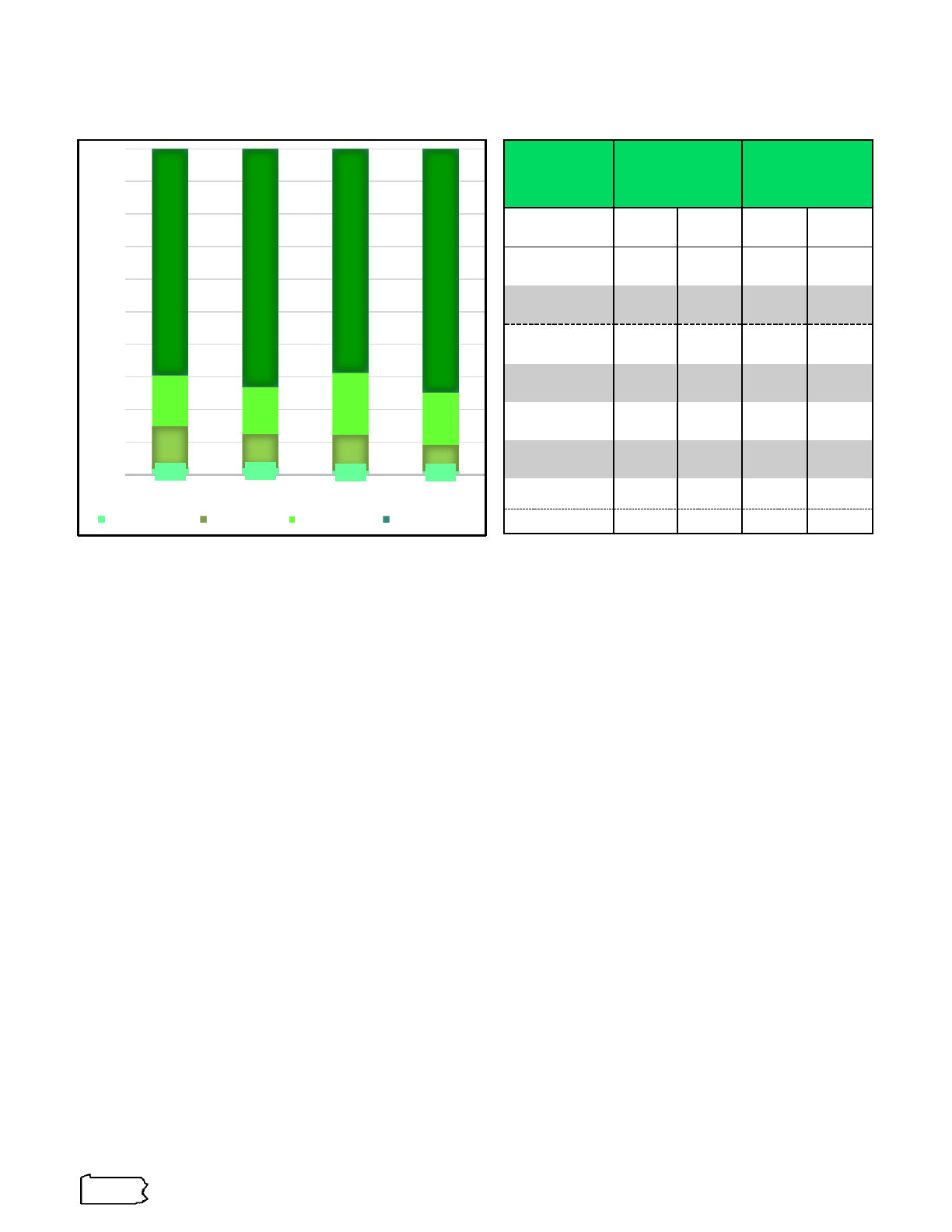
Minimum Wage Report
10
Pennsylvania and U.S. Employed Wage & Salary Workers Paid Hourly Rates
2023 Average Compared to 2022 Average (numbers of workers in thousands)
Source: U.S. Bureau of the Census, Current Population Survey
Both the U.S. minimum wage and the PA minimum wage were $7.25 during 2022 and 2023.
Totals and differences may not sum due to rounding.
In 2023, there were an estimated 67,800 Pennsylvania workers earning minimum wage or
less. This is the third lowest number of at or below minimum wage workers on record in this
annual report series. It is 4,200 workers (+6.6 percent) higher than the previous low set in
2022 when it was 63,600 workers. The increase was due to a larger increase in those earning
below the minimum wage than the decrease in those earning at the minimum wage. Workers
earning minimum wage or less represented 2.1 percent of all hourly workers and 1.1 percent
of all workers.
Pennsylvania’s hourly employment decreased by 16,600 workers (-0.5 percent), while its
overall employment increased by 207,500 (+3.4 percent). U.S. hourly employment increased
by 1,782,000 workers (+2.3 percent), while the nation’s overall employment increased by
2,745,000 workers (+1.7 percent). The proportion of all workers receiving hourly rates
decreased in Pennsylvania and increased in the nation from 2022. In 2023, the percentage of
the employed earning hourly rates was higher in Pennsylvania (51 percent) than in the U.S.
overall (50 percent), but the gap narrowed.
In 2023, the U.S. and Pennsylvania had similar experiences regarding increases in
employment and wages. Both wage distributions also shifted away from wage categories
between $7.25 and $15.00 [at minimum wage, near minimum wage ($7.26 - $12.00), and
$12.01 - $15.00], while increasing in both volume and percentage in the above $15.00
category. However, Pennsylvania and the nation diverged on the number of hourly workers
and workers earning below $7.25 (which caused the number of at or below minimum wage
workers to diverge as well). Pennsylvania’s share of above $15.00 per hour workers rose to
73.1 percent, while the nation’s percentage rose to 74.8 percent. The median wage in
Pennsylvania increased from $18.16 to $19.85, while it rose from $18.00 to $19.20 in the
nation. Pennsylvania had a higher percentage (2.1 percent) of workers at or below the federal
minimum wage of $7.25 than did the nation (1.1 percent).
2.0%
2.1%
1.3%
1.1%
12.8%
10.4%
10.9%
8.1%
15.7%
14.4%
19.1%
16.0%
69.5%
73.1%
68.7%
74.8%
0%
10%
20%
30%
40%
50%
60%
70%
80%
90%
100%
PA 2022 PA 2023 U.S. 2022 U.S. 2023
At or below $7.25
$7.26 – $12.00
$12.01 – $15.00
More than $15.00
Total, 16 Years
and Over
2022
2023
US
PA
US
PA
Total Paid an
Hourly Rate
78,813
3,252.5
80,595
3,236.0
Total at or below
$7.25
1,031
63.6
870
67.8
Less than $7.25
887
46.2
788
56.3
At $7.25
144
17.4
82
11.5
$7.26 – $12.00
8,588
417.8
6,498
335.1
$12.01 – $15.00
15,040
509.7
12,904
467.0
More than
$15.00
54,153
2,261.4
60,324
2,366.1
Median Wage
$18.00
$18.16
$19.20
$19.85

Minimum Wage Report 11
COMPARISON OF MINIMUM WAGE
OR BELOW WORKER
CHARACTERISTICS TO OTHER
POPULATIONS
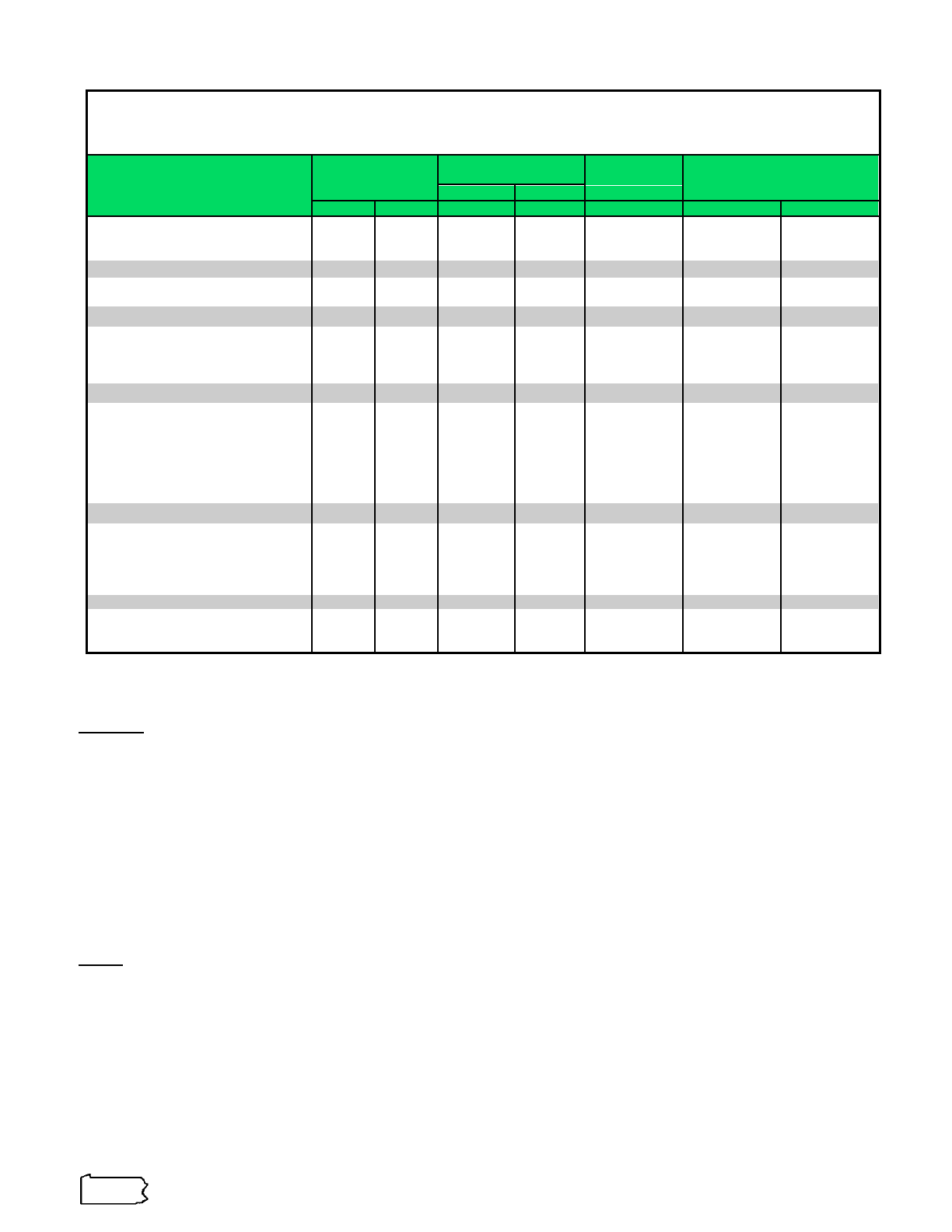
Minimum Wage Report
12
Pennsylvania and U.S. 2023 Averages
Demographic Characteristics of Various Populations
(total numbers of workers in thousands, breakdown by characteristic in percent)
Demographic Characteristics
Minimum Wage or
Below
Above Minimum
Wage
All
Population 16 and Over
Near
Total
Employed
2
PA
1
U.S.
1
PA
PA
PA
PA
U.S.
TOTAL
67.8
870
335.1
3,168.2
6,358.8
10,489.9
266,938
Gender
Male
31.6%
31.3%
38.2%
50.3%
52.0%
48.8%
48.9%
Female
68.4%
68.7%
61.8%
49.7%
48.0%
51.2%
51.1%
Race
Black, non-Hispanic
15.8%
14.0%
11.3%
11.9%
9.7%
9.9%
12.1%
Hispanic
0.0%
19.4%
10.7%
8.6%
6.8%
6.2%
17.8%
Other, non-Hispanic
4.3%
7.5%
9.4%
5.7%
6.6%
6.2%
9.2%
White, non-Hispanic
79.8%
59.2%
68.6%
73.8%
76.9%
77.7%
60.9%
Age
16-19
31.6%
18.9%
30.4%
6.9%
4.1%
5.9%
6.4%
20-24
22.3%
25.5%
24.2%
14.1%
9.3%
8.1%
8.3%
25-34
20.6%
26.2%
8.1%
21.8%
21.8%
16.1%
16.7%
35-44
10.9%
12.9%
9.6%
17.9%
20.9%
15.2%
16.3%
45-54
8.6%
7.9%
9.1%
16.0%
19.3%
14.5%
15.0%
55-64
2.0%
5.6%
7.1%
16.4%
17.3%
15.9%
15.5%
65 and over
4.1%
3.0%
11.5%
7.0%
7.4%
24.3%
21.8%
Education
Less than a high school diploma
28.3%
16.2%
26.0%
8.4%
6.2%
10.3%
11.9%
High school graduates, no college
17.8%
29.1%
38.0%
37.7%
27.1%
31.6%
28.0%
Some college, no degree
29.1%
26.9%
20.4%
16.9%
12.8%
13.2%
15.7%
Associate degree
2.3%
8.0%
7.9%
11.2%
9.8%
9.4%
9.7%
Bachelor's degree or higher
22.4%
19.8%
7.7%
25.8%
44.0%
35.6%
34.6%
Marital Status
Married Spouse Present
7.7%
20.9%
21.1%
40.8%
51.3%
48.7%
48.8%
Marital Status Other
6.5%
10.7%
10.9%
13.6%
12.8%
18.2%
18.5%
Never Married
85.8%
68.3%
67.9%
45.6%
35.9%
33.1%
32.7%
1
Both the U.S. and PA minimum wages were $7.25 during 2023.
2
All Employed includes hourly workers (minimum wage or below and above minimum wage) and workers not earning an hourly wage.
Totals may not sum due to rounding.
Source: U.S. Bureau of the Census, Current Population Survey
Gender
The gender composition of Pennsylvania’s at or below minimum wage workers was most
similar to that of other workers in the U.S. earning at or below minimum wage and to a lesser
extent to those in Pennsylvania earning the near minimum wage ($7.26 to $12.00). The overall
population of those 16 years and older in both Pennsylvania and the U.S. was almost evenly
divided between males and females with a slight edge to females. Similarly, the total
population of those earning above the minimum wage in Pennsylvania and the Pennsylvania
population of all employed, was evenly divided, but with males being in the majority. In
contrast, females outnumbered males by 68.4 percent to 31.6 percent among at or below
minimum wage workers in Pennsylvania during 2023.
Race
White workers represented a significant majority of Pennsylvania’s at or below minimum wage
workers, as they did for all of Pennsylvania’s other reported wage categories. White workers
were slightly underrepresented in all of the above minimum wage categories depicted relative
to their percentage of all employed, while being overrepresented among workers earning at or
below the minimum wage.
Black Workers made up the second largest group of minimum wage or below workers, as well
as in all the other wage categories depicted and among all employed in Pennsylvania. Black
workers were overrepresented in their proportion of at or below minimum wage workers
relative to their percentage of employed in Pennsylvania.
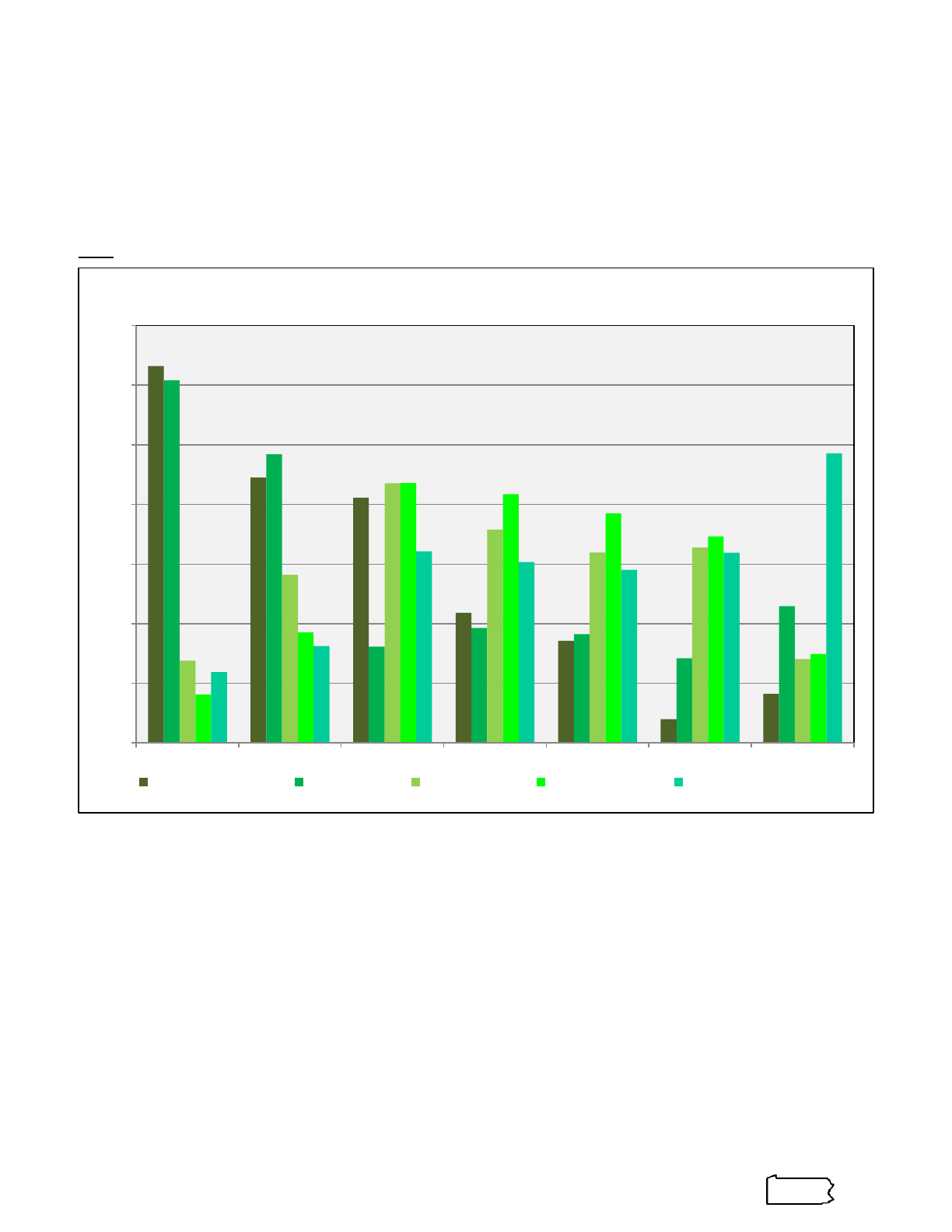
Minimum Wage Report 13
Hispanic workers and Other non-Hispanic workers earning at or below the minimum wage
were underrepresented relative to their proportion of the employed in Pennsylvania.
Nationally among at or below minimum wage workers, Black and Hispanic workers were
overrepresented, while White and Other workers were underrepresented relative to their
overall populations.
Age
Source: U.S. Bureau of the Census, Current Population Survey
Among Pennsylvania’s minimum wage or below population, about 54 percent was under 25
years of age, while another 40 percent were between 25 and 54 years. In comparison, in the
employed population of Pennsylvania slightly more than 13 percent of all employed were
under 25 years of age and almost 62 percent of the employed group were between 25 and 54
years of age.
Slightly more than 6 percent of minimum wage or below workers were 55 years old or older
compared to almost 25 percent of the employed population in Pennsylvania. The 55-64 and
65 and over age groups together constituted over 40 percent of the Pennsylvania population
who were at least 16 years old.
0%
5%
10%
15%
20%
25%
30%
35%
16-19 20-24 25-34 35-44 45-54 55-64 65 and over
A Comparison of the 2023 Age Distributions of
Five Populations in Pennsylvania
MW and Below Near MW Above MW All Employed Population 16 and Over
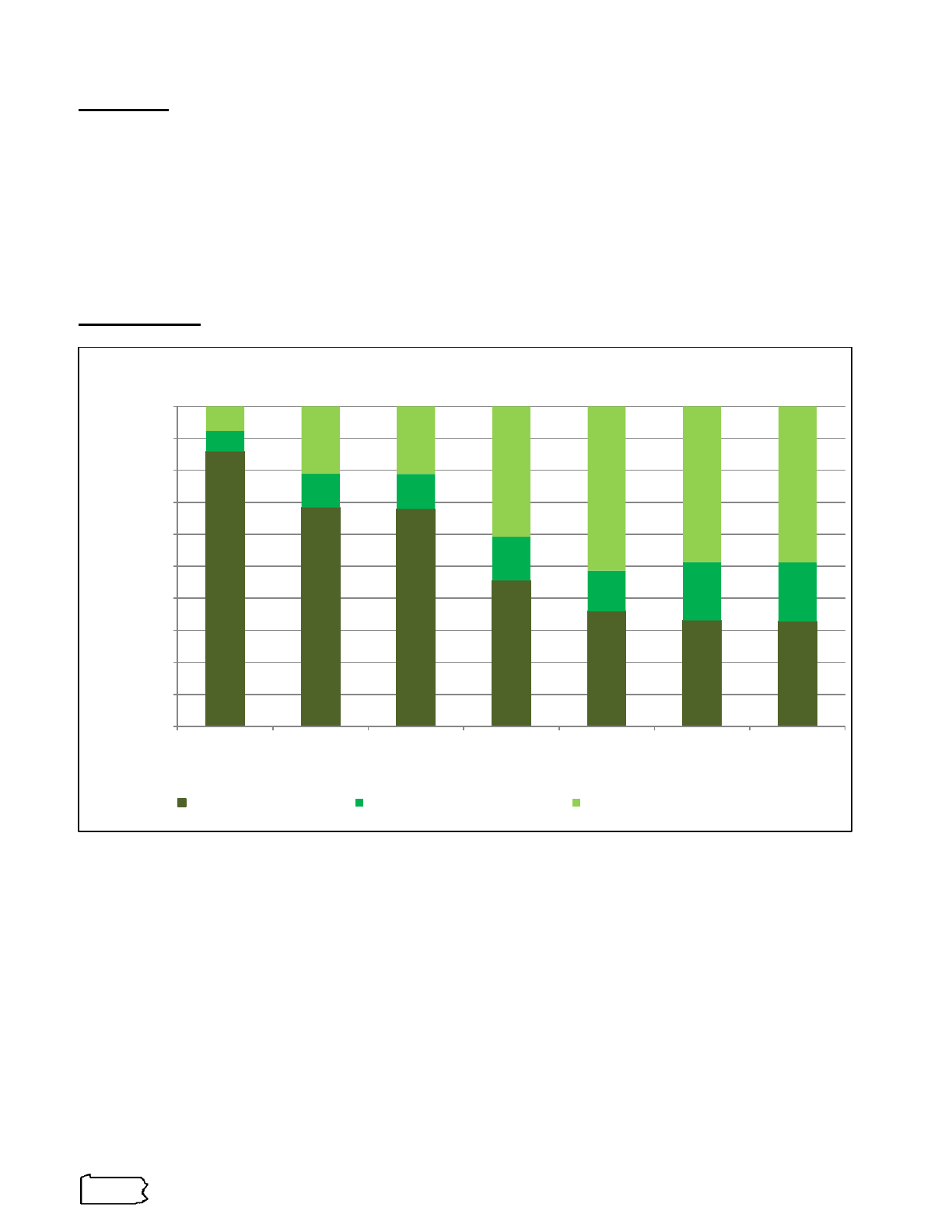
Minimum Wage Report
14
Education
In general, at or below minimum wage workers in Pennsylvania tended to be less educated than
other employed workers in the state. Those with a high school diploma or less accounted for 46
percent of those earning the minimum wage or less in 2023, compared to 33 percent for all
employed. At the other end of the education spectrum, less than 25 percent of minimum wage or
below workers had at least an associate degree, while the percentage of all employed with at
least an associate degree was almost 54 percent. More than 22 percent of those earning the
minimum wage or less had bachelor’s degrees compared to 44 percent among all employed in
Pennsylvania.
Marital Status
Source: U.S. Bureau of the Census, Current Population Survey
A sizable majority (85.8 percent) of minimum wage earners had never been married. The
remainder was divided between those who were married with spouse present at 7.7 percent
and those with a marital status of other (divorced, separated, or widowed) at 6.5 percent.
85.8%
68.3%
67.9%
45.6%
35.9%
33.1%
32.7%
6.5%
10.7%
10.9%
13.6%
12.8%
18.2%
18.5%
7.7%
20.9%
21.1%
40.8%
51.3%
48.7%
48.8%
0%
10%
20%
30%
40%
50%
60%
70%
80%
90%
100%
PA Min Wage US Min Wage PA Near Min
Wage
PA Above Min
Wage
PA All Employed PA POP 16+ US POP 16+
Distributions of Marital Status:
Various Populations 2023
Never Married Marital Status Other Married Spouse Present

Minimum Wage Report 15
Family Status and Family Income of Workers Paid Hourly Rates:
2023 Selected Groups in Pennsylvania and the U.S.
(total numbers of workers in thousands, breakdown by characteristic in percent)
Characteristics
At or Below the Minimum
Wage
Above the Minimum Wage
Total Hourly
Workers
Near
Total
PA
1
U.S.
1
PA
PA
U.S.
TOTAL
67.8
870
335.1
3,168.2
80,595
Family Status
2
No Children (Single or Married)
94%
79%
91%
74%
73%
Married Parent
3%
11%
5%
18%
19%
Single Parent
3%
9%
4%
8%
8%
1 child
3%
5%
4%
5%
5%
2 children
0%
0%
0%
2%
2%
3 children
0%
2%
0%
1%
1%
4 or more children
0%
0%
0%
0%
0%
Family Annual Income
$9,999 or less
7%
5%
2%
1%
2%
$10,000 to $19,999
6%
5%
12%
4%
4%
$20,000 to $29,999
0%
9%
9%
5%
6%
$30,000 to $39,999
9%
13%
7%
8%
10%
$40,000 to $49,999
5%
8%
6%
8%
8%
$50,000 to $59,999
10%
8%
8%
8%
9%
$60,000 To $74,999
18%
10%
10%
14%
12%
$75,000 To $99,999
8%
9%
9%
16%
15%
$100,000 To $149,999
0%
13%
18%
17%
18%
$150,000 and Over
36%
19%
18%
18%
16%
1
PA and U.S. minimum wages in 2023 were $7.25.
2
Classification of an individual as a parent requires having at least one own child under the age of 18. All references to children also refer to own children under the age of 18.
Totals in the table are rounded to the nearest percent and may differ from those in the text and may not sum correctly due to rounding.
Percentages less than one half of one percent were rounded to 0 percent.
Source: U.S. Bureau of the Census, Current Population Survey
Workers having no children made up 94 percent of those earning the minimum wage or less
in Pennsylvania. Among those earning near the minimum wage in Pennsylvania, married
parents constituted a smaller percentage (5 percent) than in the other U.S. and Pennsylvania
populations depicted above, except for minimum wage or below earners in Pennsylvania,
which had a married parent cohort of 3 percent. In 2023, 100 percent of single parents in the
Pennsylvania minimum wage or below population had one child. The family status of those
earning near the minimum wage in Pennsylvania was more like Pennsylvania’s minimum
wage or below population than either the nation’s at or below minimum wage population or
Pennsylvania’s above minimum wage population.
The family income of those who earned the minimum wage or less in Pennsylvania varied
greatly. Slightly less than 27 percent of such workers were in families whose combined
income was less than $50,000 per year and 12 percent were in families with less than
$30,000 per year. In contrast, almost 45 percent had annual family incomes of $75,000 or
more a year and over 36 percent had annual family incomes of $150,000 or more per year.
The family income distribution of near minimum wage workers in Pennsylvania was most like
that of the U.S. minimum wage or below population.
Due to the small sample of minimum wage and below workers in Pennsylvania and the
smaller cohorts within that sample, care should be taken in interpreting results such as these.

Minimum Wage Report
16

Minimum Wage Report 17
INDUSTRY AND OCCUPATIONAL
DISTRIBUTIONS
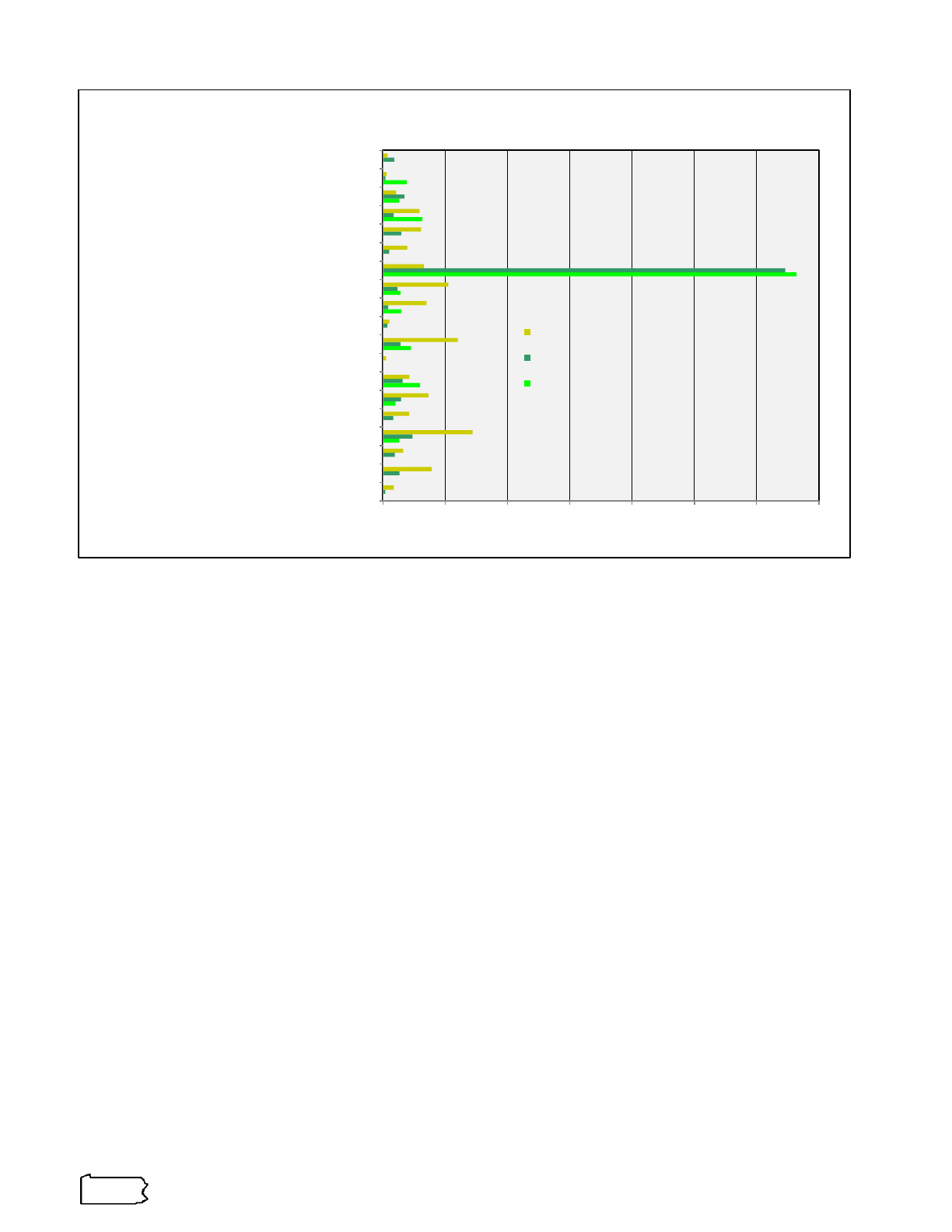
Minimum Wage Report
18
Source: U.S. Bureau of the Census, Current Population Survey
PA and U.S. minimum wages in 2023 were both at $7.25.
In Pennsylvania, workers earning at or below the minimum wage were most likely to be
employed in the following industries: food services and drinking places, construction, and
other services. Combined, these industries employed 79 percent of all minimum wage earners
in 2023.
Sixty-six percent of minimum wage or below earners worked at food services and drinking
places. In contrast, only 7 percent of those earning above minimum wage worked in this
industry. Workers in this industry may earn above the minimum wage when tips are included;
however, they are counted as below minimum wage earners since the measured wage
excludes tips.
The declining trend in the number of minimum wage or below workers has led to fewer
industry groups having minimum wage workers, and even those with representation had
relatively few. In 2023, despite a small increase in the number of minimum wage or below
workers, excluding the top three industry groups mentioned above, each of the remaining
industry groups had less than 5 percent of the minimum wage workers and minimum wage
workers were absent from over 47 percent of the industry groups.
The retail trade industry in Pennsylvania employs many hourly-paid workers and accounted for
a large proportion of workers earning more than the minimum wage (14 percent) and a higher
proportion of those earning the near minimum wage (26 percent). Historically, a large
proportion of workers earning the minimum wage or below were in retail trade, but due to
steadily increasing entry-level wage rates in the industry that proportion has been declining.
Retail trade, in combination with non-hospital health care services and manufacturing,
accounted for 37 percent of all those earning above the minimum wage in 2023.
More detailed information on these industry distributions as well as that of the near minimum
wage population can be found in the Appendix on page 40.
0% 10% 20% 30% 40% 50% 60% 70%
Wholesale trade
Transportation and utilities
Social assistance
Retail trade
Public administration
Professional and business services
Other services
Mining
Manufacturing
Information
Hospitals
Health care services, except hospitals
Food services and drinking places
Financial activities
Educational services
Construction
Arts, entertainment, and recreation
Agriculture, forestry, fishing, and hunting
Accommodation
A Comparison of Industry Distributions in 2023 of Various Populations:
Pennsylvania and the United States
PA Above Minimum Wage
U.S. Minimum Wage or Below
PA Minimum Wage or Below
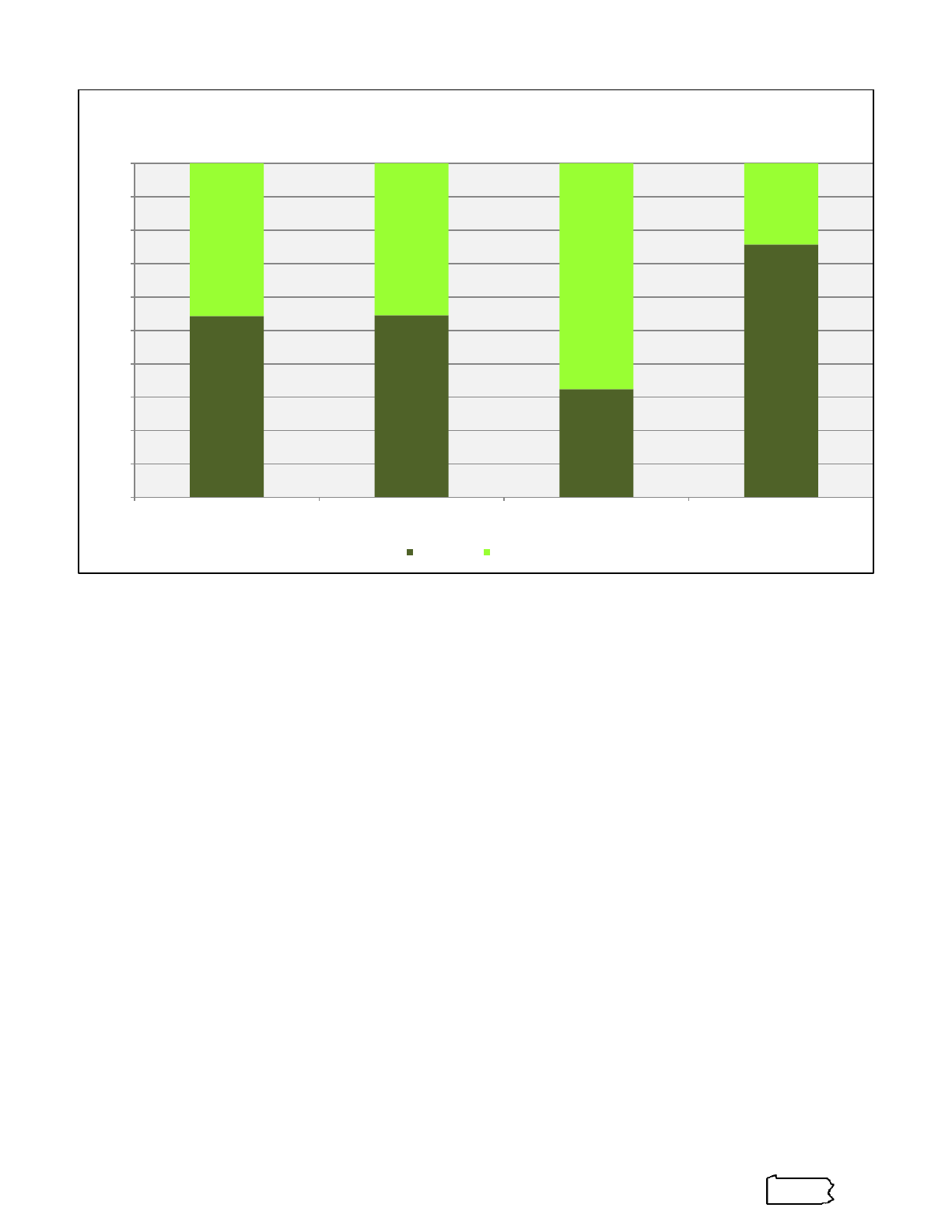
Minimum Wage Report 19
Source: U.S. Bureau of the Census, Current Population Survey
PA and U.S. minimum wages in 2023 were both at $7.25.
Any worker who works at least 35 hours for pay (aggregate) in the survey week is classified by
the Census as full time. This is irrespective of whether those hours were worked at one or
more jobs. Conversely, any worker whose cumulative hours worked in the survey week was
between one and 34 hours is classified as part time.
In 2023, more than one half of at or below minimum wage earners in Pennsylvania worked full
time. More than three out of four of all hourly workers earning above the minimum wage in
Pennsylvania worked full time. The ratio of full-time to part-time minimum wage or below
workers in Pennsylvania was closest to that of the nation’s minimum wage or below
population. The ratio of full-time to part-time near minimum wage workers in Pennsylvania was
lowest among the populations depicted. Typically, the ratio of full-time to part-time minimum
wage or below workers in Pennsylvania has been less than one (i.e., there were fewer full-
time workers than part-time workers), however that was not the case in 2023.This may be
indicative of a dramatic change in the composition of minimum wage or below workers in
Pennsylvania, a nonrepresentative sample in the CPS, or both.
54.3%
54.5%
32.4%
75.7%
45.7%
45.5%
67.6%
24.3%
0%
10%
20%
30%
40%
50%
60%
70%
80%
90%
100%
PA Minimum Wage and Below U.S. Minimum Wage and Below PA Near Minimum Wage PA Above Minimum Wage
Distribution of Workers Between Full Time and Part Time:
2023 Various Populations
Full-time Part-time
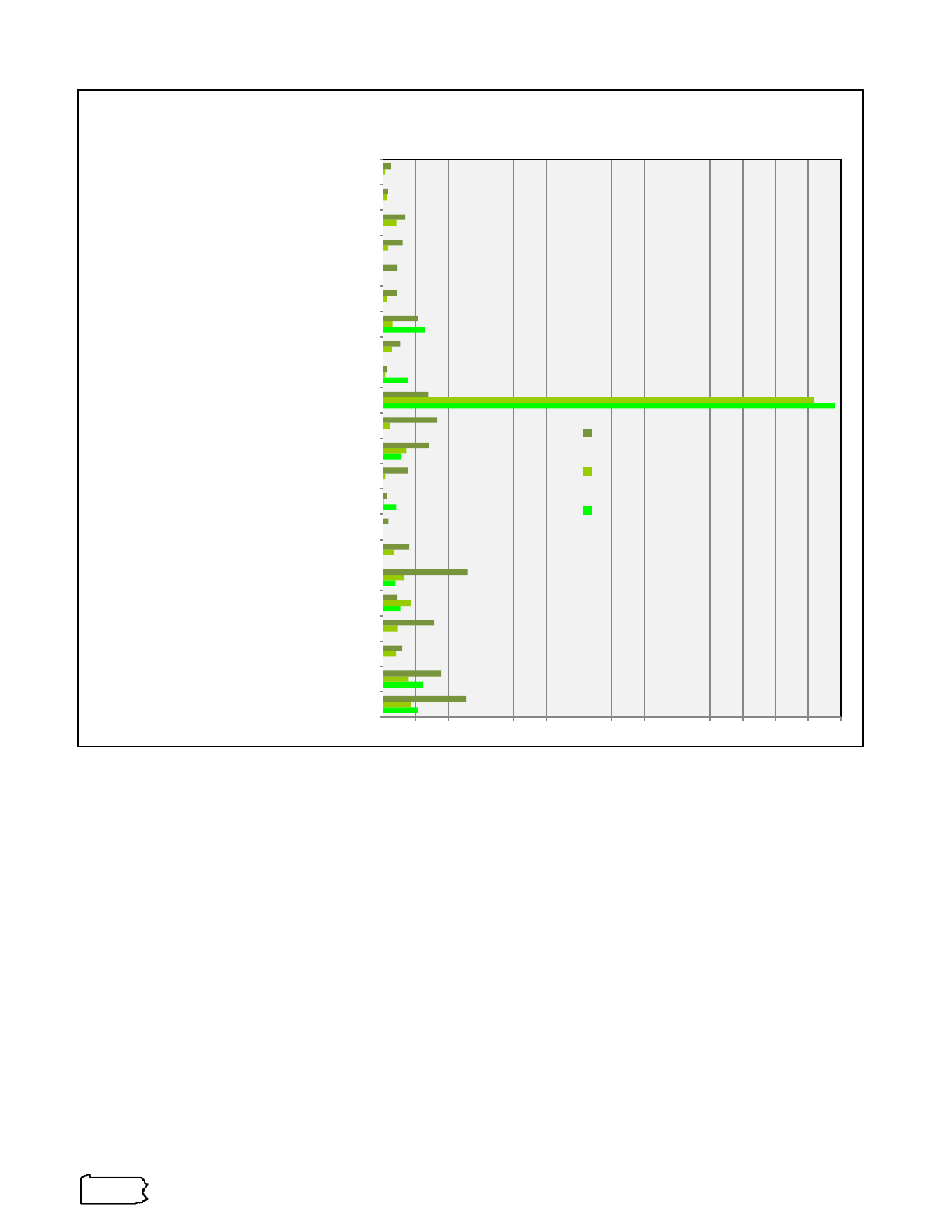
Minimum Wage Report
20
Both the PA and U.S. minimum wages were $7.25 in 2023.
Source: U.S. Bureau of the Census, Current Population Survey
In 2023, 69 percent of Pennsylvanians who earned the minimum wage or less worked in food
preparation & serving related occupations, 6 percent were employed in construction & extraction
occupations and 6 percent in sales & related occupations. Minimum wage or below workers in
the U.S. were slightly less concentrated in the food preparation & serving occupational group
than those of Pennsylvania (66 percent compared with 69 percent) and had a more diverse
distribution of occupations.
The distribution of occupations for Pennsylvanians who earned above the minimum wage was
more diverse than those who earned the minimum wage or less. Their top four occupational
groups were office & administrative support (13 percent), transportation & material moving (13
percent), sales & related (9 percent), and healthcare practitioner & technical (8 percent). Food
preparation & serving related occupations accounted for only 22 percent of workers earning
near minimum wage and 7 percent of those earning above the minimum wage. Workers
earning above the minimum wage were represented in all 22 of the listed occupational groups,
while only 41 percent of them had representation from the at or below minimum wage cohort.
More detailed information on these occupational distributions as well as that of the near
minimum wage population can be found in the Appendix on page 41.
0% 5% 10% 15% 20% 25% 30% 35% 40% 45% 50% 55% 60% 65% 70%
Transportation & Material Moving
Sales & Related
Protective Service
Production
Personal Care & Service
Office & Administrative Support
Management
Life, Physical & Social Service
Legal
Installation, Maintenance & Repair
Healthcare Support
Healthcare Practitioner & Technical
Food Preparation & Serving Related
Farming, Fishing & Forestry
Education, Training & Library
Construction & Extraction
Computer & Mathematical Science
Community & Social Service
Business & Financial Operations
Building and Grounds Cleaning & Maintenance
Arts, Design, Entertainment, Sports & Media
Architecture & Engineering
2023 Occupational Group Distributions: Pennsylvania’s Minimum Wage and Below
Population Compared to its Above Minimum Wage Population and the Minimum Wage
and Below Population of the U.S.
PA Above Minimum Wage
U.S. Minimum Wage and Below
PA Minimum Wage and Below

Minimum Wage Report 21
RECENT HISTORICAL COMPARISONS
(ONE AND FIVE YEARS)
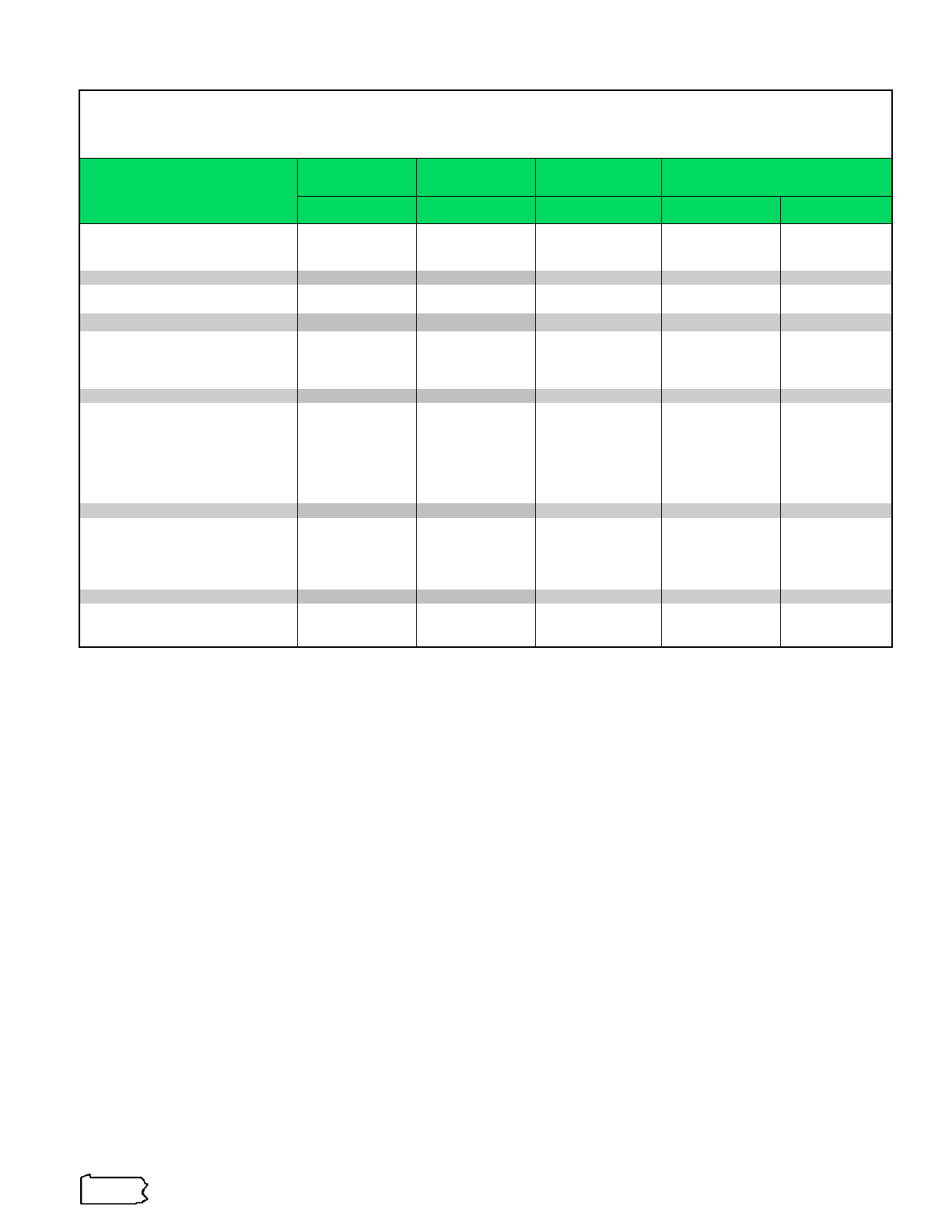
Minimum Wage Report
22
Pennsylvania
Demographic Characteristics of Workers Paid Hourly Rates at or Below the Minimum Wage
Annual Average 2023 Compared to Annual Average 2022 and 2018
(total numbers of workers in thousands, all other numbers in percent)
Demographic Characteristics
2018
2022
2023
Percentage
Point Change
PA
1
PA
2
PA
2
2018 to 2023
2022 to 2023
TOTAL
96.3
63.6
67.8
-
-
Gender
Male
31%
27%
32%
0%
4%
Female
69%
73%
68%
0%
-4%
Race
Black, non-Hispanic
11%
10%
16%
5%
6%
Hispanic
5%
8%
0%
-5%
-8%
Other, non-Hispanic
12%
2%
4%
-8%
2%
White, non-Hispanic
71%
80%
80%
9%
0%
Age
16-19
37%
23%
32%
-5%
8%
20-24
23%
19%
22%
0%
3%
25-34
15%
13%
21%
5%
7%
35-44
5%
17%
11%
6%
-6%
45-54
7%
11%
9%
1%
-3%
55-64
7%
10%
2%
-5%
-8%
65 and over
6%
6%
4%
-2%
-2%
Education
Less than a high school diploma
35%
10%
28%
-7%
18%
High school graduates, no college
28%
43%
18%
-10%
-25%
Some college, no degree
16%
33%
29%
13%
-4%
Associate degree
8%
2%
2%
-6%
1%
Bachelor's degree or higher
13%
13%
22%
10%
10%
Marital Status
Married Spouse Present
17%
22%
8%
-9%
-15%
Marital Status Other
6%
4%
7%
0%
2%
Never Married
77%
74%
86%
9%
12%
1
The minimum wage in 2018, 2022, and 2023 was $7.25 and was unchanged during those years.
Totals and changes may not sum due to rounding.
Source: U.S. Bureau of the Census: Current Population Survey
From 2018 through 2023, the minimum wage in Pennsylvania was constant at $7.25, having last
been increased in July 2009. During that period, the number of minimum wage or below workers in
Pennsylvania declined by 28,500 or 29.6 percent. Labor market conditions from 2018 through
2023 improved in Pennsylvania (except during the period of the pandemic and the response to it,
when there was a steep decline in total and hourly employment), as evidenced by the growth in
employment as well as by an increase in average wages. Wages continued to increase due to the
employment recovery (which began in 2020) and the higher inflation following the pandemic. The
increased wages led to the continued trend of fewer minimum wage or below workers. Despite an
increase in total employment over this period, there was a small decline in hourly employment,
which may have also contributed to the decline in the number of minimum wage or below workers.
In 2023, males comprised 32 percent of minimum wage or below workers. This represented a
small increase from 2018 and an increase of 4 percentage points from 2022.
From 2018 to 2023, the proportions of Pennsylvania’s minimum wage or below earners under 25
years of age or over 54 years of age decreased. Relative to 2022 the age distribution of 2023 was
younger, as the 55 and older proportion shrunk while the percentage of those below age 25 grew.
Over the last 5 years, the composition of minimum wage or below workers shifted towards non-
Hispanic White and Black workers and away from Hispanic and Other non-Hispanic workers.
The demographic changes from 2022 to 2023 were even more volatile than those from five years
ago. The small sample of minimum wage or below workers may explain some of the recent
volatility in the demographic characteristics.
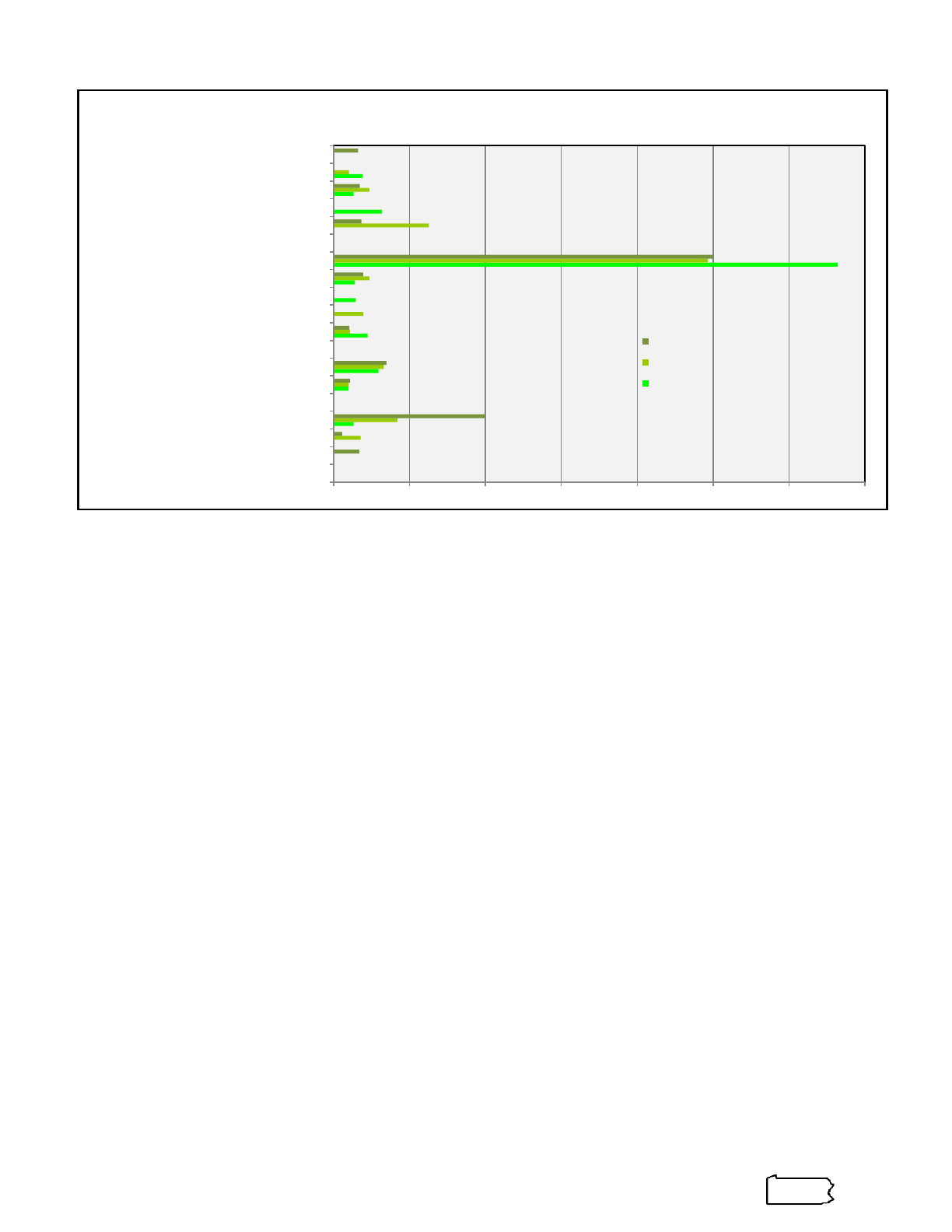
Minimum Wage Report 23
1
The minimum wage was constant at $7.25 from 2018 through 2023.
Source: U.S. Bureau of the Census: Current Population Survey
In 2018, 2022, and 2023, workers earning at or below the minimum wage were most likely to be
employed in food services & drinking places. Over the five-year interval, while the absolute
number of minimum wage workers in that industry declined its percentage increased
dramatically. Retail trade typically had been the second ranked industry group in terms of
number of minimum wage or below workers. Such was the case in 2018 when 20 percent of
minimum wage or below workers were in retail trade. The representation of this industry group
fell by 12 percentage points by 2022 and in 2023 was down to 3 percent. The trend of
decreasing numbers of minimum wage workers in retail trade is likely due to the steadily
increasing beginning wage rates in that industry, particularly among large employers. The
number of minimum wage or below workers in manufacturing rose by more than 52 percent
between 2018 and 2023. In addition, over that period, the number of minimum wage or below
workers in construction went from zero to 4,300, an increase of 6.3 percentage points.
The decrease in workers earning minimum wage or below from 2018 to 2023 has been
accompanied by fewer industry groups having representation of such workers. In 2023 there
were nine industry groups without any representation from minimum wage or below workers.
The largest volume decreases in the number of minimum wage or below workers over the last
five years were in retail trade and educational services. Retail trade fell by 91 percent, while
educational services lost its total representation of minimum wage or below workers.
Between 2018 and 2023, the proportion of hourly workers earning the minimum wage or less
who worked full time increased from 20.4 percent to 54.3 percent, after rising to 30.0 percent in
2022. The number of minimum wage or below workers who were full time increased by 87.5
percent despite the total number of workers earning the minimum wage or less declining by 29.6
percent over this 5-year interval.
0% 10% 20% 30% 40% 50% 60% 70%
Wholesale trade
Transportation and utilities
Social assistance
Retail trade
Public administration
Professional and business services
Other services
Mining
Manufacturing
Information
Hospitals
Health care services, except hospitals
Food services and drinking places
Financial activities
Educational services
Construction
Arts, entertainment, and recreation
Agriculture, forestry, fishing, and hunting
Accommodation
A Comparison of Industry Distributions of Pennsylvania’s Workers Earning
At or Below the Minimum Wage: 2023 vs. 2022 and 2018
1
2018
2022
2023

Minimum Wage Report
24
Occupational Characteristics of Wage & Salary Workers Paid Hourly Rates at or Below the Minimum Wage
Pennsylvania Annual Average 2023 Compared to Annual Average 2022 and 2018
(total numbers of workers in thousands, all others are in percent)
Occupation
2018
2022
2023
Percentage
Point Change
PA
1
PA
1
PA
1
2018 to 2023
2022 to 2023
TOTAL
96.3
63.6
67.8
-
-
Architecture & Engineering
0%
2%
0%
0%
-2%
Arts, Design, Entertainment, Sports & Media
0%
4%
0%
0%
-4%
Building and Grounds Cleaning & Maintenance
4%
4%
0%
-4%
-4%
Business & Financial Operations
0%
2%
0%
0%
-2%
Community & Social Service
0%
0%
0%
0%
0%
Computer & Mathematical Science
0%
0%
0%
0%
0%
Construction & Extraction
0%
0%
6%
6%
6%
Education, Training & Library
0%
0%
0%
0%
0%
Farming, Fishing & Forestry
0%
2%
4%
4%
2%
Food Preparation & Serving Related
50%
51%
69%
19%
18%
Healthcare Practitioner & Technical
0%
0%
0%
0%
0%
Healthcare Support
4%
6%
3%
-1%
-4%
Installation, Maintenance & Repair
1%
0%
0%
-1%
0%
Legal
0%
0%
2%
2%
2%
Life, Physical & Social Service
0%
0%
0%
0%
0%
Management
0%
0%
0%
0%
0%
Office & Administrative Support
11%
13%
2%
-9%
-11%
Personal Care & Service
7%
7%
3%
-4%
-4%
Production
2%
0%
0%
-2%
0%
Protective Service
0%
0%
0%
0%
0%
Sales & Related
14%
6%
6%
-8%
0%
Transportation & Material Moving
9%
3%
5%
-3%
3%
1
The PA minimum wage in 2018, 2022, and 2023 was $7.25.
Totals and changes may not add up due to rounding.
Source: U.S. Bureau of the Census, Current Population Survey
In 2018, half (50 percent) of Pennsylvanians who earned the minimum wage or less worked in
food preparation & serving related occupations. Another 14 percent of Pennsylvanians who
earned the minimum wage or less were employed in sales & related occupations. From 2018 to
2023, the proportion of Pennsylvania minimum wage or below earners who worked in food
preparation & serving related occupations increased by 19 percentage points even as it declined
by 33 percent on an absolute level. Sales & related occupations decreased by 8 percentage
points, which was the second largest relative decrease behind office & administrative support
occupations, which fell by 9 percentage points.
The occupational categories whose percentage of minimum wage or below earners increased
the most over the five-year interval besides food preparation & serving related occupations
(which rose by 19 percentage points) were construction & extraction (6 percentage points) and
farming, fishing & forestry (4 percentage points). Legal occupations (which increased by 2
percentage points) was the only other occupational category with an increased percentage over
the interval. These three occupational categories had no minimum wage or below
representation in 2018.
The relative changes from 2022 to 2023 were similar to the changes over the five-year period.
Two examples of this were in the occupational categories with the largest percentage point
increases and decreases. Food preparation & serving related occupations had the largest
percentage increase over the year (18 percentage points) and over the 5-year period (19
percentage points). Similarly, the occupational category with the largest percentage point
decrease was the office & administrative support occupations, which decreased by 11
percentage points from 2022 and by 9 percentage points from 2018.

Minimum Wage Report 25
Pennsylvania Family Status and Family Income Characteristics of Workers
Paid Hourly Rates At or Below the Minimum Wage
Comparison of 2023, 2022, and 2018
Characteristic
2018
2022
2023
Percentage
Point Change
PA
1
PA
1
PA
1
2018 to 2023
2022 to 2023
TOTAL (in thousands)
96.3
63.6
67.8
-
-
Family Status
2
(in Percent)
No Children (Single or Married)
84%
93%
94%
10%
1%
Married Parent
6%
0%
3%
-2%
3%
Single Parent
11%
7%
3%
-8%
-4%
1 child
3%
2%
3%
0%
0%
2 children
5%
0%
0%
-5%
0%
3 children
3%
4%
0%
-3%
-4%
4 or more children
0%
0%
0%
0%
0%
Family Annual Income (in Percent)
$9,999 or less
8%
11%
7%
-1%
-4%
$10,000 to $19,999
18%
7%
6%
-12%
-1%
$20,000 to $29,999
14%
11%
0%
-14%
-11%
$30,000 to $39,999
2%
11%
9%
8%
-2%
$40,000 to $49,999
12%
0%
5%
-7%
5%
$50,000 to $59,999
6%
8%
10%
4%
3%
$60,000 To $74,999
11%
18%
18%
7%
1%
$75,000 To $99,999
15%
13%
8%
-7%
-5%
$100,000 To $149,999
9%
14%
0%
-9%
-14%
$150,000 and Over
5%
9%
36%
32%
28%
1
The PA minimum wage in 2018, 2022, and 2023 was $7.25.
2
Classification of an individual as a parent requires having at least one own child under the age of 18. All references to children also refer to own children under the age of 18.
Totals in the table are rounded to the nearest percent and may differ from those in the text and may not sum correctly due to rounding.
Source: U.S. Bureau of the Census, Current Population Survey
The biggest change in family composition of minimum wage or below workers from 2018 to
2023 was the increase (10 percentage points) in the percentage of those without children and
an almost equal decrease in the percentage of single parents (8 percentage points). The
decrease in the percentage of single parents was due to a lack of single parents with more than
one child, as the percentage with one child was unchanged. From 2018 to 2022, the percentage
of single parents decreased by 4 percentage points and decreased by another 4 percentage
points from 2022 to 2023.
On a relative basis, the distribution of family income of minimum wage and below workers
shifted from the lowest incomes (under $30,000) and to incomes in excess of $149,999 over the
last five years. From 2018 to 2023, the percentage of minimum wage or below workers whose
family income was less than $30,000 decreased by 27 percentage points to 12 percent, and a
decrease of 16 percentage points from 2022. At the same time, the percentage of such workers
with family income of at least $150,000 was 36 percent, which was 28 percentage points higher
than in 2022 and 32 percentage points higher than in 2018. The family income cohort with family
income from $75,000 to $149,000 fell by 16 percentage points compared to five years prior and
decreased by 18 percentage points compared to 2022.
Given the relatively small CPS sample size of total minimum wage or below workers, the smaller
subsamples for some of the characteristics above can lead to volatility in making comparisons
over time. Therefore, it is difficult to determine whether these results are simply statistical
anomalies due to small sample sizes or reflect actual changes in the composition of the
minimum wage and below population or some combination thereof.

Minimum Wage Report
26

Minimum Wage Report 27
HISTORICAL PERSPECTIVE:
MINIMUM WAGE IN RELATION TO
INFLATION AND THE POVERTY
THRESHOLD
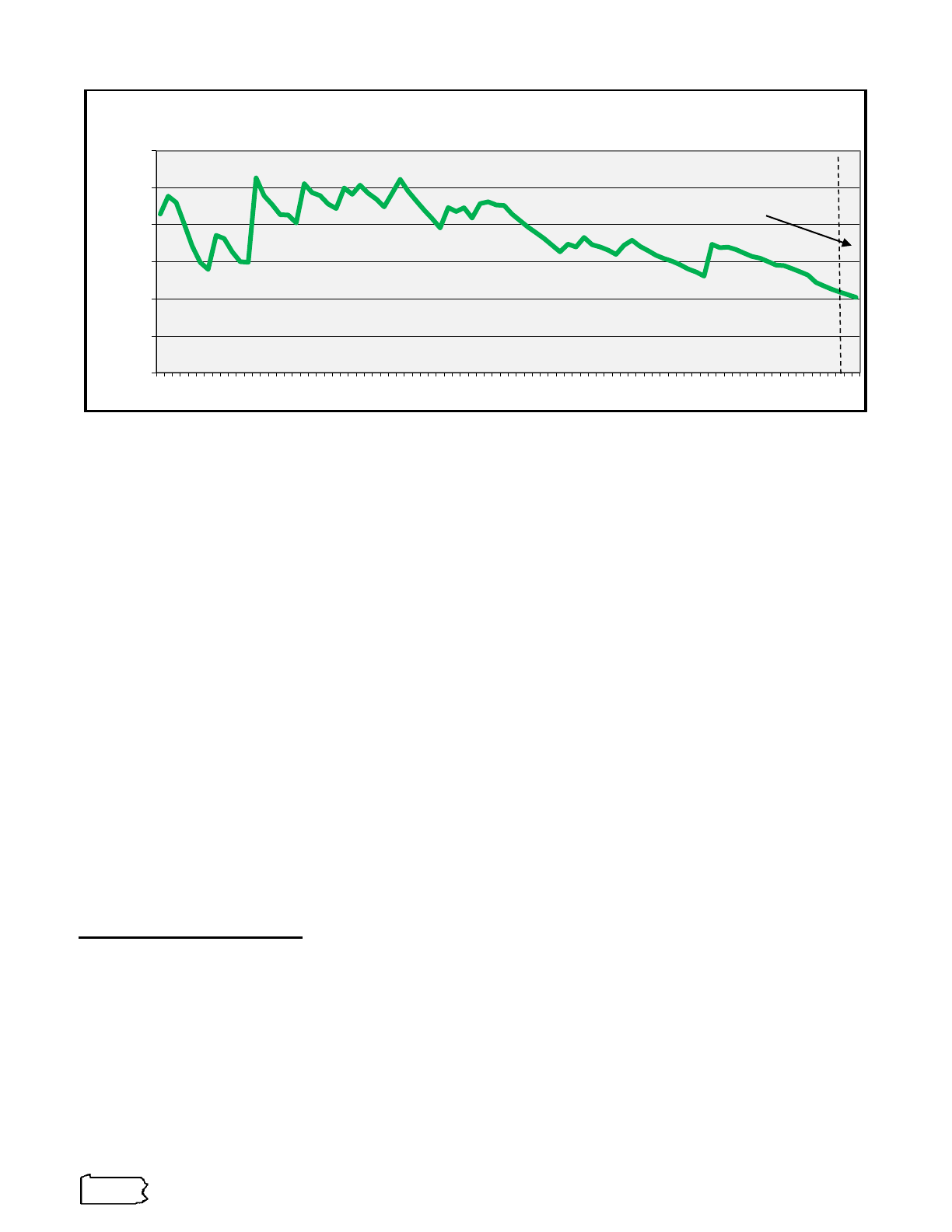
Minimum Wage Report
28
The Average Wage forecast was based on its 10-year arithmetiv average.
The minimum wage in 2022 (and 2023) was $7.25.
The original level of the minimum wage was set in 1938 at 25 cents, which was 50 percent of
the national average manufacturing wage at that time. According to Jonathan Grossman, a
Department of Labor historian, “…, The act applied only to interstate commerce and to
accommodate various interests, exemption after exemption was granted. A ‘guesstimate’
1
is that
one fifth of the American labor force,…were covered by the FLSA.”
2
Over time, as the coverage
of the minimum wage expanded and manufacturing employment declined as a percentage of
total employment, the statewide average wage replaced the average manufacturing wage as the
relevant comparison wage, as shown in the above chart. Adjusted for projected wage inflation
using its 10-year average, 50 percent of the average wage was $16.10 in 2022. It is projected
to rise to $16.64 in 2023, $17.21 in 2024, and $17.79 in 2025.
A gradual decline in the minimum wage as a percentage of the Pennsylvania’s average wage
began in 1968. By 2006, Pennsylvania’s minimum wage was 26 percent of the average wage.
This was the all-time low since this information first was documented in 1938 through 2019.
The increase in the minimum wage to $7.25 in July 2009 brought the minimum wage up to 34
percent of the average wage. In 2022, Pennsylvania’s minimum wage was 23 percent of the
average wage, a new all-time low. If the minimum wage stays at its current level and the average
wage grows at its projected 10-year average rate, the minimum wage will continue to drop to 22
percent of the average Pennsylvania wage by 2023, 21 percent in 2024, and to 20 percent by
2025.
1
Data on the estimated number covered was reported in The Twenty-Seventh Annual Report of the Secretary of Labor (1939),
as of September 1938 (p.198). The section on coverage of the act begins, “It will not be possible to prepare completely accurate
estimates of the number of employees who are covered by the act …” Later it states that the BLS estimated the coverage six
months later and it was 1.45 million (18%), higher. Furthermore, it was well known that inter census labor force numbers prior
to 1940 (when the CPS (predecessor) began), were not comparable (conceptually and by the fact that they included people 14
years and older) and that data on unemployment may not be accurate. These facts may have led Grossman to characterize the
ratio as a ‘guesstimate.’
2
Grossman, Jonathan, “Fair Labor Standards Act of 1938: maximum struggle for a minimum wage,” Monthly Labor Review,
June 1978 p. 29. Grossman begins that paragraph with, “A major problem with the FLSA was its limited coverage.” This attitude
may explain why he compared coverage with the labor force rather than employment, particularly in a year when the
unemployment rate was 19%. That would make the cover ratio lower. Not all employees in industries engaged in or producing
goods for interstate commerce were covered. Among the exemptions were interstate retailing enterprises, non-railroad
transportation workers, and agriculture.
0
10
20
30
40
50
60
1938
1941
1944
1947
1950
1953
1956
1959
1962
1965
1968
1971
1974
1977
1980
1983
1986
1989
1992
1995
1998
2001
2004
2007
2010
2013
2016
2019
2022
2025
Percent of Average Hourly Wage
Pennsylvania's Minimum Wage as a Percent of Pennsylvania's
Average Wage: 1938-2025
Forecast
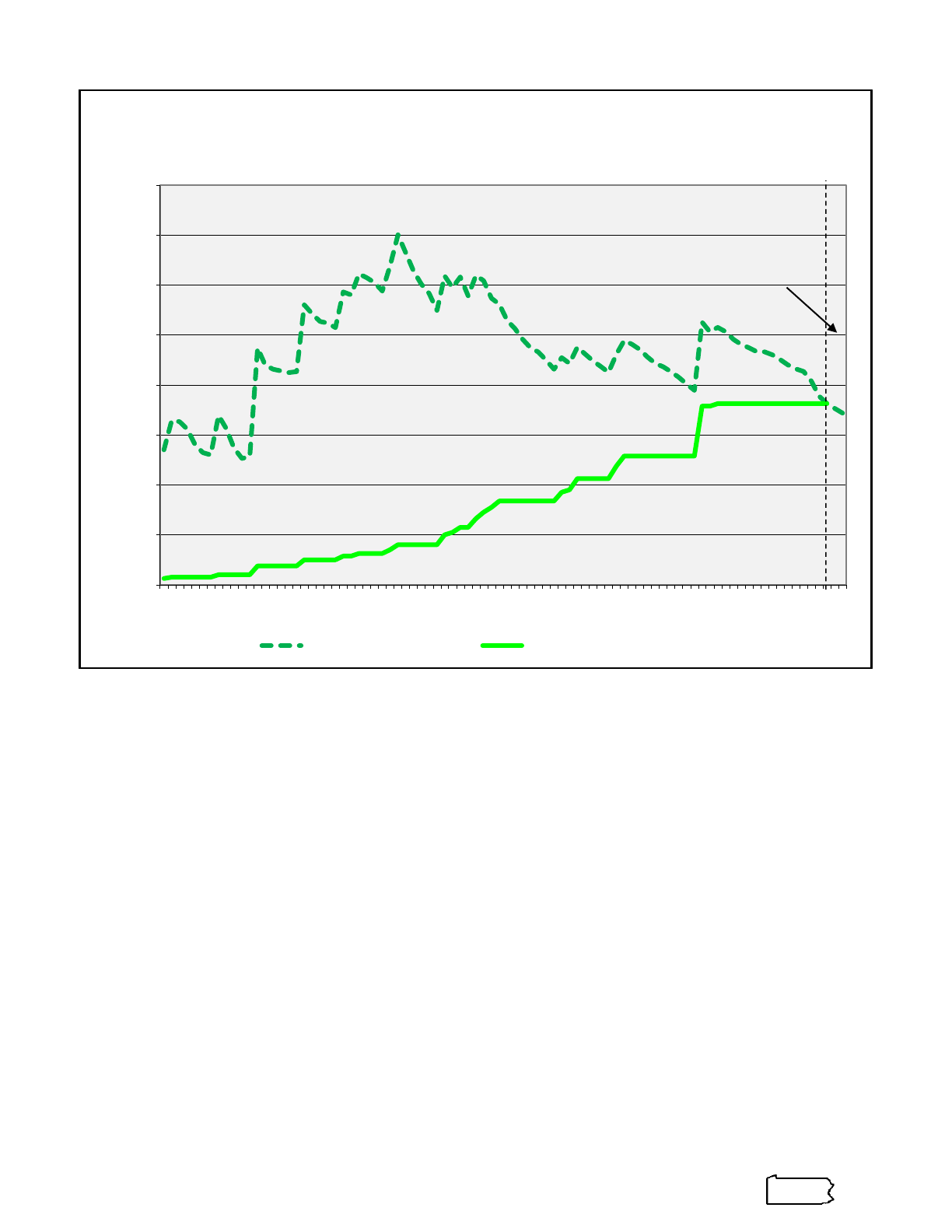
Minimum Wage Report 29
1
Indexed to 2023 dollars.
The inflation forecast was based on its 10-year arithmetic average applied to the minimum wage.
The minimum wage in 2023 was $7.25.
Inflation adversely affects the purchasing power of an unchanging minimum wage. The inflation
adjusted or real minimum wage increases when the percentage increase in the nominal
minimum wage exceeds the (price) inflation rate and decreases when the reverse is true. All the
peaks in the graph above correspond to years in which the nominal minimum wage was
increased. In the remaining years, the minimum wage was unchanged, but the real minimum
wage fell as prices rose. Similarly, if the nominal minimum wage remains at $7.25, the value of
the minimum wage as adjusted for projected inflation is estimated to fall to $7.06 in 2024 and
$6.87 in 2025.
The 1938 minimum wage of $0.25 would have been equivalent in purchasing power to $5.40 in
2023 dollars. The minimum wage was raised to $0.30 in 1939 and to $0.40 in 1945 causing its
purchasing power to increase. However, the post-war inflation that followed caused the
purchasing power of the minimum wage (still $0.40) to fall to its all-time low of $5.06 in 1948.
In 1968, the year in which the purchasing power of the minimum wage peaked, the then-current
nominal minimum wage of $1.60 was equivalent to $14.01 in 2023 dollars. Pennsylvania’s
minimum wage remained unchanged from September of 1997 to the end of 2006, while prices
rose considerably. As the above graph indicates, in 2006 the purchasing power of the minimum
wage was less than at any time since the 1950s. In 2009, the last year in which the minimum
wage increased, the purchasing power of the minimum wage was $10.30 (in 2023 dollars) and
has been steadily declining since then.
0.00
2.00
4.00
6.00
8.00
10.00
12.00
14.00
16.00
1938
1941
1944
1947
1950
1953
1956
1959
1962
1965
1968
1971
1974
1977
1980
1983
1986
1989
1992
1995
1998
2001
2004
2007
2010
2013
2016
2019
2022
2025
Dollars
Pennsylvania
Real (Inflation Adjusted) and Nominal Minimum Wage Rates
1
1938-2025
Real Minimum Wage Nominal Minimum Wage
Forecast
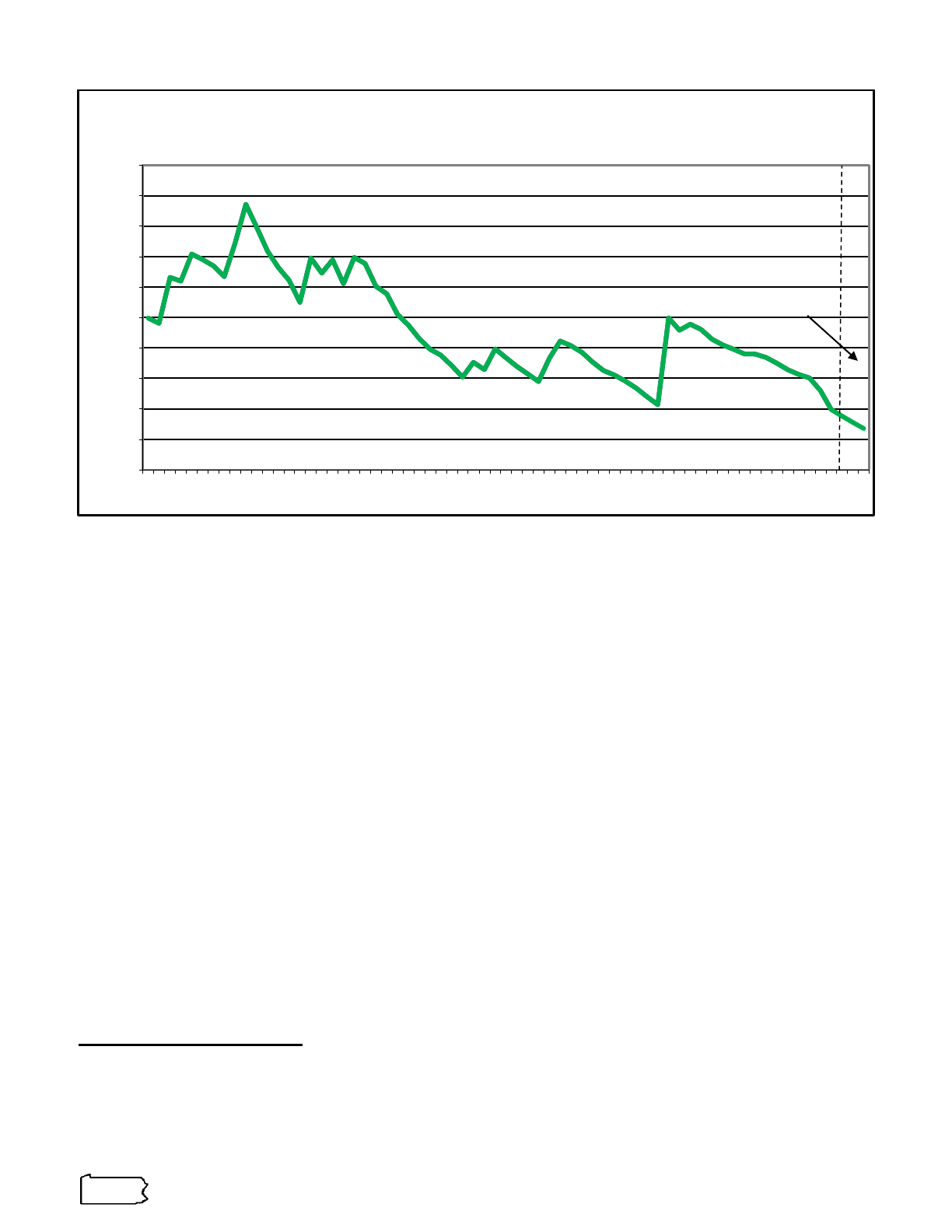
Minimum Wage Report
30
1
Weighted average threshold (there are slight variations based on the breakdown between adults and children in the household)
The inflation forecast was based on its 10-year average applied to the poverty threshold.
Source: U.S. Bureau of the Census
The Census annually sets poverty thresholds for families that vary by family size and the ages
of its members. Each threshold is a monetary sum that is compared to the family’s income to
determine the poverty status of all the members of that family
3
. Family income is pre-tax and
includes earnings, unemployment compensation, public assistance, and a variety of other
unearned income and transfer payments, but excludes capital gains, noncash benefits (e.g.,
food stamps), and tax credits (e.g., Earned Income Tax Credit or EITC). To provide perspective
on the relation between the minimum wage and poverty, hypothetical examples are constructed
and illustrated below and on the following page.
The 2006 Federal Poverty Threshold (see glossary) for a two-person household was $13,167
and the annual income for an individual working full time
4
at the minimum wage (then $5.15)
was $10,712 or 81 percent of the poverty threshold. The two 2007 increases in the minimum
wage (cumulatively to $7.15) raised the corresponding annual income at year end to $14,872,
which was almost 110% of the poverty threshold.
In 2022, the annual income for an individual in Pennsylvania making the minimum wage ($7.25)
was $15,080 or 79.8 percent of the 2022 Federal Poverty Threshold for a two-person household
($18,900).
3
Poverty thresholds are used mainly for statistical purposes. Poverty guidelines, which are a simplification of poverty thresholds, are issued by
the U.S. Department of Health and Human Services for use for administrative purposes, e.g., determining eligibility for federal programs. Go to
this link for more information: https://aspe.hhs.gov/topics/poverty-economic-mobility/poverty-guidelines/further-resources-poverty-measurement-
poverty-lines-their-history.
4
Full time in this context (in contrast to the BLS definition used to determine the number of full-time workers) means working 52 weeks per year
and 40 hours per week.
60%
70%
80%
90%
100%
110%
120%
130%
140%
150%
160%
1959
1961
1963
1965
1967
1969
1971
1973
1975
1977
1979
1981
1983
1985
1987
1989
1991
1993
1995
1997
1999
2001
2003
2005
2007
2009
2011
2013
2015
2017
2019
2021
2023
2025
Pennsylvania
Minimum Wage as Percent of Federal Poverty Threshold, 2 Persons
1
1959-2025
Forecast
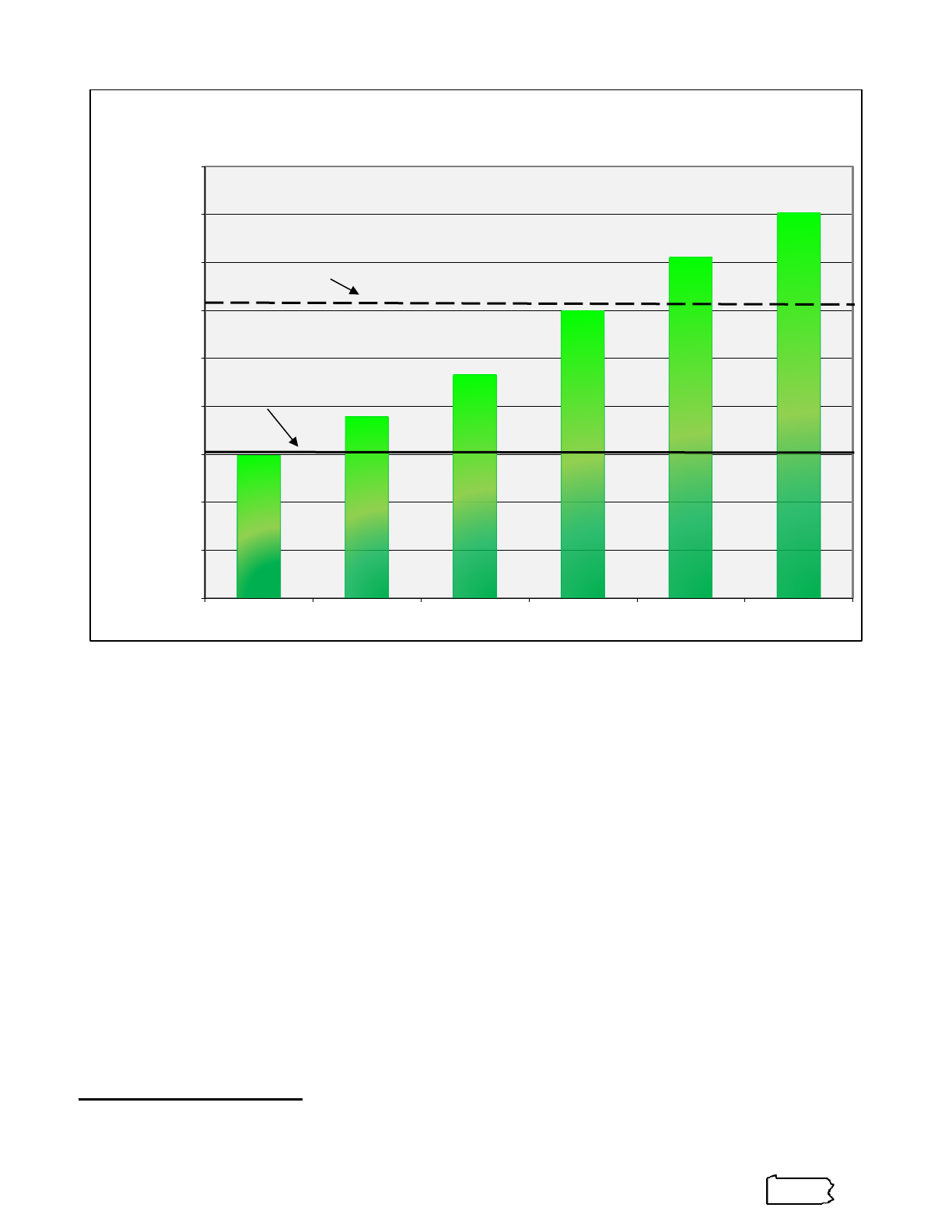
Minimum Wage Report 31
1
Weighted average threshold (there are slight variations based on the breakdown between adults and children in the household)
Source: U.S. Bureau of the Census
A person working full time at the minimum wage of $7.25 per hour earned $15,080 (represented
by the bold line on the graph) during 2022. This income exceeded the 2022 Federal Poverty
Threshold for a one-person household ($14,880). However, it fell short of the poverty threshold
for two-person ($18,900) and three-person households ($23,280).
A single, two-children parent working full time at $7.25 per hour would earn wages below the
applicable poverty threshold. However, a two-parent, two-child family with both parents working
full time at the minimum wage would earn $30,160 (the bold dashed line on the graph) and would
exceed the poverty threshold for a four-person household ($29,950).
5
Families of minimum wage or below workers who are below the poverty threshold may be eligible
to participate in state and federal government programs designed to assist low-income families.
A description of some of these major programs is found in the Appendix on page 42.
5
These examples are for illustration purposes only and are not representative of the majority of minimum wage earners, although they
may reflect the situation of some families. As pointed out earlier, a large percentage of minimum wage earners work fewer than 35 hours
a week and would earn less than $15,080 per year.
$0
$5,000
$10,000
$15,000
$20,000
$25,000
$30,000
$35,000
$40,000
$45,000
1 2 3 4 5 6
Annual Income
People in Family
2022 Federal Poverty Threshold by Family Size
1
Compared with
Pennsylvania Minimum Wage Level
Annual income of 1 full-time worker
earning $7.25 Minimum Wage
Annual income of 2 full-time workers
earning $7.25 Minimum Wage

Minimum Wage Report
32

Minimum Wage Report 33
OTHER STATES
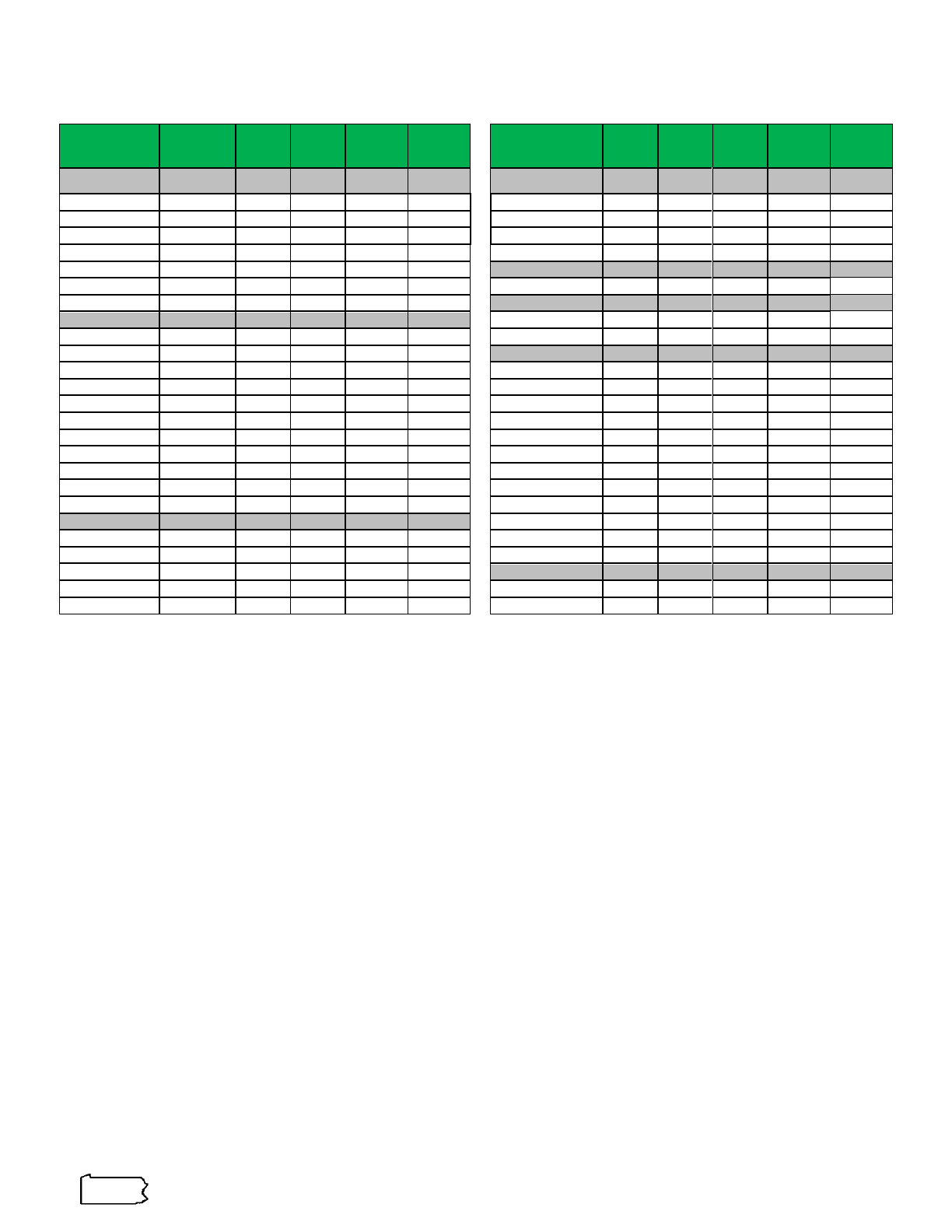
Minimum Wage Report
34
Minimum Wage Rates by State
Area
2022
2023
2024
Change
2022-
2023
Change
2023-
2024
Area
2022
2023
2024
Change
2022-
2023
Change
2023-
2024
Federal
$7.25
$7.25
$7.25
-
-
Federal
$7.25
$7.25
$7.25
-
-
Alabama
$7.25
$7.25
$7.25
-
-
Montana
1
$9.20
$9.95
$10.30
$0.75
$0.35
Alaska
1
$10.34
$10.85
$11.73
$0.51
$0.88
Nebraska
1
$9.00
$10.50
$12.00
$1.50
$1.50
Arizona
1
$12.80
$13.85
$14.35
$1.05
$0.50
Nevada
1
$10.50
$11.25
$12.00
$0.75
$0.75
Arkansas
$11.00
$11.00
$11.00
-
-
New Hampshire
$7.25
$7.25
$7.25
-
-
California
1
$15.00
$15.50
$16.00
$0.50
$0.50
New Jersey
1
$13.00
$14.13
$15.13
$1.13
$1.00
Colorado
1
$12.56
$13.65
$14.42
$1.09
$0.77
New Mexico
$11.50
$12.00
$12.00
$0.50
-
Connecticut
1
$14.00
$15.00
$15.69
$1.00
$0.69
New York
1
$14.20
$14.20
$15.00
-
$0.80
Delaware
$10.50
$11.75
$13.25
$1.25
$1.50
North Carolina
$7.25
$7.25
$7.25
-
-
Florida
1
$11.00
$12.00
$13.00
$1.00
$1.00
North Dakota
$7.25
$7.25
$7.25
-
-
Georgia
$7.25
$7.25
$7.25
-
-
Ohio
1
$9.30
$10.10
$10.45
$0.80
$0.35
Hawaii
$12.00
$12.00
$14.00
-
$2.00
Oklahoma
$7.25
$7.25
$7.25
-
-
Idaho
$7.25
$7.25
$7.25
-
-
Oregon
1
$13.50
$14.20
TBD
$0.70
TBD
Illinois
$12.00
$13.00
$14.00
$1.00
$1.00
Pennsylvania
$7.25
$7.25
$7.25
-
-
Indiana
$7.25
$7.25
$7.25
-
-
Rhode Island
$12.25
$13.00
$14.00
$0.75
$1.00
Iowa
$7.25
$7.25
$7.25
-
-
South Carolina
$7.25
$7.25
$7.25
-
-
Kansas
$7.25
$7.25
$7.25
-
-
South Dakota
1
$9.95
$10.80
$11.20
$0.85
$0.40
Kentucky
$7.25
$7.25
$7.25
-
-
Tennessee
$7.25
$7.25
$7.25
-
-
Louisiana
$7.25
$7.25
$7.25
-
-
Texas
$7.25
$7.25
$7.25
-
-
Maine
1
$12.75
$13.80
$14.15
$1.05
$0.35
Utah
$7.25
$7.25
$7.25
-
-
Maryland
$12.50
$13.25
$15.00
$0.75
$1.75
Vermont
1
$12.55
$13.18
$13.67
$0.63
$0.49
Massachusetts
$14.25
$15.00
$15.00
$0.75
-
Virginia
$11.00
$12.00
$12.00
$1.00
-
Michigan
$9.87
$10.10
$10.33
$0.23
$0.23
Washington
1
$14.49
$15.74
$16.28
$1.25
$0.54
Minnesota
1
$10.33
$10.59
$10.85
$0.26
$0.26
West Virginia
$8.75
$8.75
$8.75
-
-
Mississippi
$7.25
$7.25
$7.25
-
-
Wisconsin
$7.25
$7.25
$7.25
-
-
Missouri
1
$11.15
$12.00
$12.30
$0.85
$0.30
Wyoming
$7.25
$7.25
$7.25
-
-
1
Minimum wage change tied to inflation rate of the Consumer Price Index (CPI), or a similar measure).
The data for 2024 (which includes enacted, but not yet effective statutory increases) was accurate as of January 10, 2024. Some states have multiple minimum wage
rates due to type of work or number of employees, while others are based on geography. The highest rate is used above for non-geographic rates, while for geographic
ones those applicable to most of the state are used. All data are as of year-end.
Data for the Federal government and states that abut Pennsylvania are shaded in gray.
Source: U.S. Department of Labor and state websites
Since 2015, the number of states setting higher minimum wage rates than Pennsylvania was
essentially static, except for Virginia, which became the 30
th
state to set a minimum wage rate
above Pennsylvania’s on May 1, 2021. During 2023, the minimum wage rates in states that
exceeded Pennsylvania’s ranged from $8.75 to $15.74. All of Pennsylvania’s neighboring states
have had minimum wages that exceeded Pennsylvania’s since the beginning of 2015. In 2023,
they ranged from $8.75 to $14.20 and for 2024, they are projected to range from $8.75 to $15.13.
In 2023 there were four states with minimum wage rates of at least $15.00. An additional three
states, all of which abut Pennsylvania, are projected to join them in 2024. Most of the states with
minimum wages higher than Pennsylvania’s tie changes in their minimum wage rates to inflation
rates of the Consumer Price Index or other similar measures to provide automatic increases that
keep pace with inflation. Some states have provisions that forgo increases if the unemployment
rate is high (e.g., Michigan recently in 2021) or when the Consumer Price Index falls (e.g., Alaska
recently in 2022). In addition, some state provisions allow for local minimum wage rates to be
set higher than the state rate overall, based on the municipality, industry, size of employer, and
so forth. These higher rates are not reflected in the table above which uses the general minimum
wage rate in the state.
Twenty-six states raised their minimum wage rates in 2023, and rates are scheduled to rise in
twenty-five states by the end of 2024.
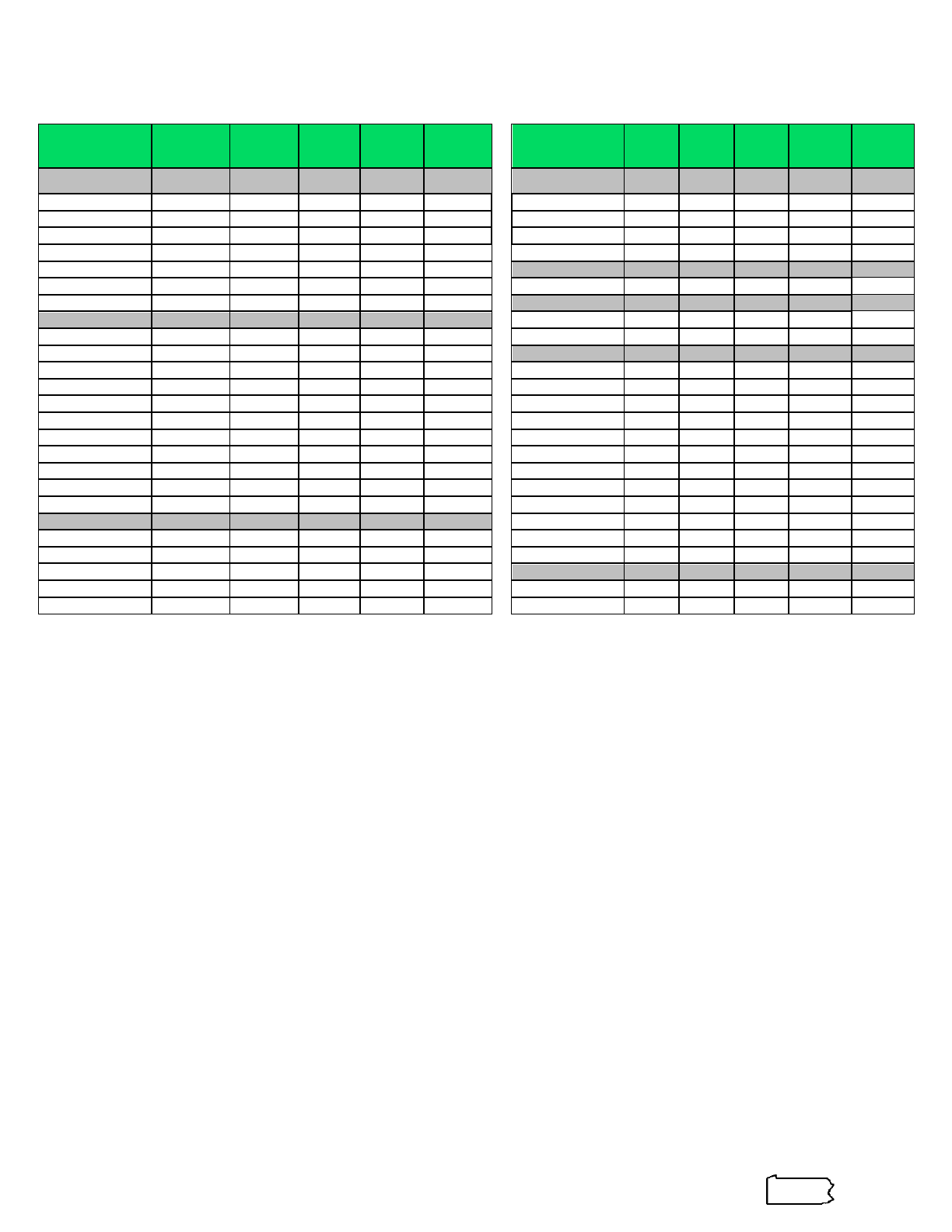
Minimum Wage Report 35
Tipped Minimum Wage Rates by State
Area
2022
2023
2024
Change
2022-
2023
Change
2023-
2024
Area
2022
2023
2024
Change
2022-
2023
Change
2023-
2024
Federal
$2.13
$2.13
$2.13
-
-
Federal
$2.13
$2.13
$2.13
-
-
Alabama
$2.13
$2.13
$2.13
-
-
Montana
1
$9.20
$9.95
$10.30
$0.75
$0.35
Alaska
1
$10.34
$10.85
$11.73
$0.51
$0.88
Nebraska
1
$2.13
$2.13
$2.13
-
-
Arizona
1
$9.80
$10.85
$11.35
$1.05
$0.50
Nevada
1
$10.50
$11.25
$12.00
$0.75
$0.75
Arkansas
$2.63
$2.63
$2.63
-
-
New Hampshire
$3.27
$3.27
$3.27
-
-
California
1
$15.00
$15.50
$16.00
$0.50
$0.50
New Jersey
1
$5.13
$5.26
$5.26
$0.13
-
Colorado
1
$9.54
$10.63
$11.40
$1.09
$0.77
New Mexico
$2.80
$3.00
$3.00
$0.20
-
Connecticut
1
$6.38
$6.38
$6.38
-
-
New York
1
$9.45
$9.45
$10.00
-
-
Delaware
$2.23
$2.23
$2.23
-
-
North Carolina
$2.13
$2.13
$2.13
-
-
Florida
1
$7.98
$8.98
$9.98
$1.00
$1.00
North Dakota
$4.86
$4.86
$4.86
-
-
Georgia
$2.13
$2.13
$2.13
-
-
Ohio
1
$4.65
$5.05
$5.25
$0.40
$0.20
Hawaii
$12.00
$12.00
$14.00
-
$2.00
Oklahoma
$2.13
$2.13
$2.13
-
-
Idaho
$3.35
$3.35
$3.35
-
-
Oregon
1
$13.50
$14.20
$14.90
$0.70
$0.70
Illinois
$7.20
$7.80
$8.40
$0.60
$0.60
Pennsylvania
$2.83
$2.83
$2.83
-
-
Indiana
$2.13
$2.13
$2.13
-
-
Rhode Island
$3.89
$3.89
$3.89
-
-
Iowa
$4.35
$4.35
$4.35
-
-
South Carolina
$2.13
$2.13
$2.13
-
-
Kansas
$2.13
$2.13
$2.13
-
-
South Dakota
1
$4.98
$5.40
$5.60
$0.42
$0.20
Kentucky
$2.13
$2.13
$2.13
-
-
Tennessee
$2.13
$2.13
$2.13
-
-
Louisiana
$2.13
$2.13
$2.13
-
-
Texas
$2.13
$2.13
$2.13
-
-
Maine
1
$6.38
$6.90
$7.08
$0.52
$0.18
Utah
$2.13
$2.13
$2.13
-
-
Maryland
$3.63
$3.63
$3.63
-
-
Vermont
1
$6.28
$6.59
$6.84
$0.31
$0.25
Massachusetts
$6.15
$6.75
$6.75
$0.60
-
Virginia
$2.13
$2.13
$2.13
-
-
Michigan
$3.75
$3.84
$3.93
$0.09
$0.09
Washington
1
$14.49
$15.74
$16.28
$1.25
$0.54
Minnesota
1
$10.33
$10.59
$10.85
$0.26
$0.26
West Virginia
$2.62
$2.62
$2.62
-
-
Mississippi
$2.13
$2.13
$2.13
-
-
Wisconsin
$2.33
$2.33
$2.33
-
-
Missouri
1
$5.58
$6.00
$6.15
$0.42
$0.15
Wyoming
$2.13
$2.13
$2.13
-
-
1
Tipped minimum wage equals the state’s minimum wage.
2
Oklahoma’s tipped minimum wage equals 50% of the state’s minimum wage, but is shown as $2.13 because all FLSA covered employees are excluded. Note: The
data for 2024 (which includes enacted, but not yet effective statutory increases) was accurate as of January 3, 2024. All data are as of year-end. Data for the Federal
government and states that abut Pennsylvania are shaded in gray. Source: U.S. Department of Labor and state websites.
Many states and the federal government allow employers to pay a cash wage lower than the
minimum wage for tipped employees. These laws require that the sum of the direct cash
payment and the tipped amount must at least equal the full minimum wage. States vary regarding
which employees are covered and many differentiate their rates based on the number of
employees in the firm and/or by geography.
The tipped minimum wage in Pennsylvania has been $2.83 since 1997. In 2023, New Mexico
raised its tipped minimum wage from $2.80 to $3.00, becoming the twenty-ninth state with a
higher tipped minimum wage rate than Pennsylvania with rates ranging from $3.00 to $15.74.
Seven of those states do not have a tip credit making their tipped minimum wages equal to their
full minimum wages. Hawaii has a tip credit only when the total of the tips plus wages exceeds
the minimum wage by $7.00 per hour; otherwise, the the employer cannot pay a cash wage
below the full minimum wage to the tipped worker.
The federal tipped minimum wage has been at $2.13 since 1991. Sixteen states had their tipped
minimum wage rates equal to the federal level during 2023, while another four states had a
tipped minimum wage above the federal level, yet below Pennsylvania’s $2.83. The tipped
minimum wages in all of Pennsylvania’s six neighboring states exceed the federal level. In 2023,
four of those states had higher rates than Pennsylvania and two were below.
The tipped minimum wage was raised in 20 states during 2023 and has already been increased
- or is projected to do so by year-end 2024 - in 18 states.
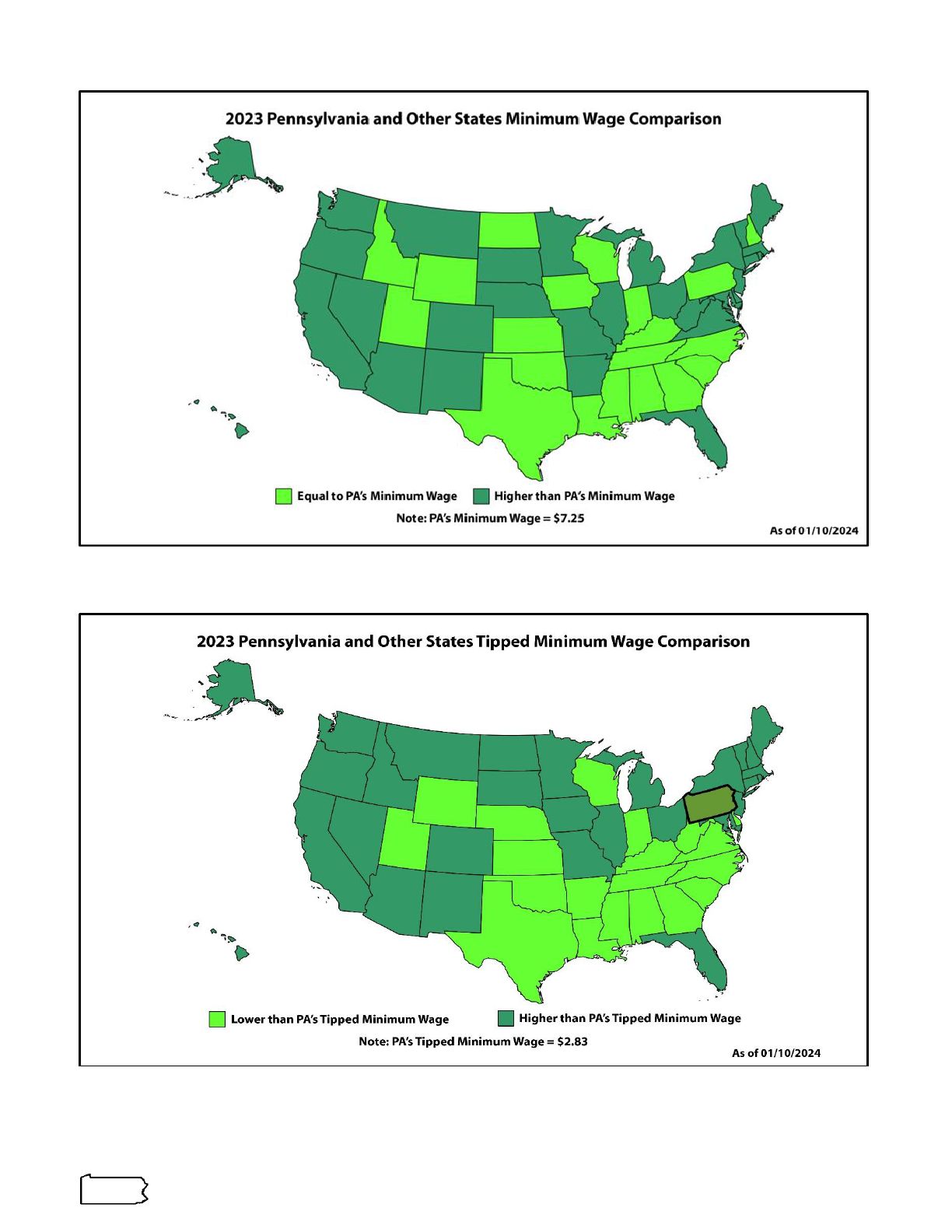
Minimum Wage Report
36

Minimum Wage Report 37
APPENDIXES

Minimum Wage Report
38
Terms, Definitions and Sources
• Bureau of the Census – The U.S. Bureau of the Census, in the U.S. Department of
Commerce, collects general information from individuals and establishments in order to
compile statistics.
• Bureau of Labor Statistics (BLS) – The federal Bureau of Labor Statistics, in the U.S.
Department of Labor, is the principal fact-finding agency for the Federal Government in
the broad field of labor economics and statistics.
• Census – A census is an enumeration of the population of a nation or a registration
region; a systematic and complete count of all who are living in specified places, usually
on a specific date. Like many modern democracies, the United States conducts a
complete enumeration every 10 years, under the auspices of the U.S. Bureau of the
Census, which publishes detailed reports.
• Consumer Price Index (CPI) – Monthly data on changes in the prices paid by urban
consumers for a representative basket of goods and services. BLS produces the CPI.
• Cost of Living Adjustment (COLA) – Adjustment of wages designed to offset changes in
the cost of living, usually as measured by the Consumer Price Index.
• Current Population Survey (CPS) – The CPS is a statistical survey conducted by the U.S.
Bureau of the Census on behalf of the federal Bureau of Labor Statistics (BLS). BLS uses
the data to provide a monthly report on the national employment situation including
employment, unemployment, labor force and the unemployment rate.
• Employed – A count of persons (not jobs) who, during the week that includes the 12th
day of the month: (a) did any work as paid employees; worked in their own business or
profession or on their own farm or worked 15 hours or more as unpaid workers in
enterprises operated by members of their families; or (b) were not working, but who had
jobs from which they were temporarily absent. Current Population Survey estimates of
the employed (as in this report) can differ from the official statistics of Pennsylvania’s
employed persons, which come from the Local Area Unemployment Statistics.
• Fair Minimum Wage Act of 2007 – The act amended the Fair Labor Standards Act of
1938 to increase the federal minimum wage by $2.10 over two years – from $5.15 to
$7.25 an hour. On July 24, 2007, the minimum wage increased from $5.15 to $5.85. On
July 24, 2008, the minimum wage increased from $5.85 to $6.55. On July 24, 2009, the
final increase occurred from $6.55 to $7.25.
• Federal Poverty Threshold – The set minimum amount of annual income that a family
needs for food, clothing, transportation, shelter, and other necessities as determined by
the U.S. Bureau of the Census. The U.S. Bureau of the Census uses a set of annual
money income thresholds that vary by family size and composition to determine who is in
poverty. Every member of a family is deemed to be in poverty if the family’s total income
is less than the applicable threshold. The calculation of family income includes before tax
income from earnings, unearned income (interest, dividends, rents, etc.), and cash
transfer payments (unemployment compensation, Social Security, SSI, public assistance,
etc.), but excludes capital gains and losses, tax credits (e.g., EITC), and noncash
benefits (e.g., food stamps). The number is adjusted for inflation and reported annually.

Minimum Wage Report 39
• Fair Labor Standards Act (FLSA) – Passed by the U.S. Congress in 1938 to establish
minimum wage rates for workers engaged directly or indirectly in interstate commerce,
including those involved in production of goods bound for such commerce. In addition to
establishing a minimum wage, it also established a maximum workweek, overtime pay,
record keeping requirements, and child labor standards affecting full-time and part-time
workers in the private sector and in federal, state, and local governments.
• Inflation – Inflation is a sustained increase in the general price level of goods and
services in an economy over some period of time. Equivalently, it also represents a
decreasing value of the country’s money. The inflation rate is the annualized percentage
change in some price index. The Consumer Price Index (CPI) is a commonly used
standard to measure inflation since it measures the average change over time of the
prices paid by urban consumers for a market basket of consumer goods and services.
• Minimum Wage – Minimum wage is the lowest lawful hourly level at which workers may
be compensated by their employers; it is established by the FLSA at the federal level and
by the Minimum Wage Act in Pennsylvania.
• National Bureau of Economic Research (NBER) – The NBER is the nation's leading
nonprofit economic research organization. Due to its work on national accounts and
business cycles, the NBER is well-known for providing start and end dates for recessions
in the United States.
• Near Minimum Wage – A range of wage rates somewhat in excess of the legal minimum
wage, but close to it. In addition to those earning at or below the minimum wage, the
group most likely to be affected by an increase in the minimum wage are those earning
the near minimum wage. For purposes of this report, wage rates between $7.26 and
$12.00 per hour are referred to as the near minimum wage.
• Tipped Minimum Wage – Labor law in many states (including Pennsylvania) as well as
federal law allows employers of tipped workers (variously defined) to take a “tip credit”
that lowers the mandated cash minimum wage below that of the actual mandated
minimum wage if the combined cash and tip income is at least equal to the full minimum
wage. The mandated hourly direct cash payment for these workers is usually referred to
as the tipped minimum wage.
• Wage and Salary Workers – These are workers aged 16 and older who receive wages,
salaries, commissions, tips, payments in kind, or piece rates on their sole or principal job.
This group includes employees in both the private and public sectors, as well as both
hourly and non-hourly workers. All self-employed workers are excluded whether or not
their businesses are incorporated.
• Workers Paid by the Hour (Hourly Workers) – These are employed wage and salary
workers who report that they are paid at an hourly rate on their job. Historically, workers
paid an hourly wage have made up approximately three-fifths of all wage and salary
workers nationally. Estimates of workers paid by the hour include both full- and part-time
workers unless otherwise specified.

Minimum Wage Report
40
Table of Industry Distributions
A Comparison of Industry Distributions of Various Populations
Pennsylvania and U.S.: 2023 Averages
(total numbers of workers in thousands, breakdown by industry in percent)
Industry Characteristics of Hourly Wage & Salary
Workers at the Minimum Wage or Below
Minimum Wage or Below
Above Minimum Wage
Near
Total
PA
1
U.S.
1
PA
PA
TOTAL
67.8
870
335.1
3,168.2
Industry
Accommodation
0%
2%
3%
1%
Agriculture, forestry, fishing, and hunting
4%
0%
0%
1%
Arts, entertainment, and recreation
3%
3%
8%
2%
Construction
6%
2%
1%
6%
Educational services
0%
3%
6%
6%
Financial activities
0%
1%
2%
4%
Food services and drinking places
66%
65%
21%
7%
Health care services, except hospitals
3%
2%
10%
11%
Hospitals
3%
1%
1%
7%
Information
0%
1%
0%
1%
Manufacturing
4%
3%
5%
12%
Mining
0%
0%
0%
0%
Other services
6%
3%
6%
4%
Professional and business services
2%
3%
3%
7%
Public administration
0%
2%
1%
4%
Retail trade
3%
5%
26%
14%
Social assistance
0%
2%
4%
3%
Transportation and utilities
0%
3%
3%
8%
Wholesale trade
0%
0%
0%
2%
Work Status
Full-time
54%
55%
32%
76%
Part-time
46%
45%
68%
24%
1
Both the U.S. minimum wage and the PA minimum wage were $7.25 during 2023
Totals may not sum due to rounding
Source: U.S. Bureau of the Census, Current Population Survey
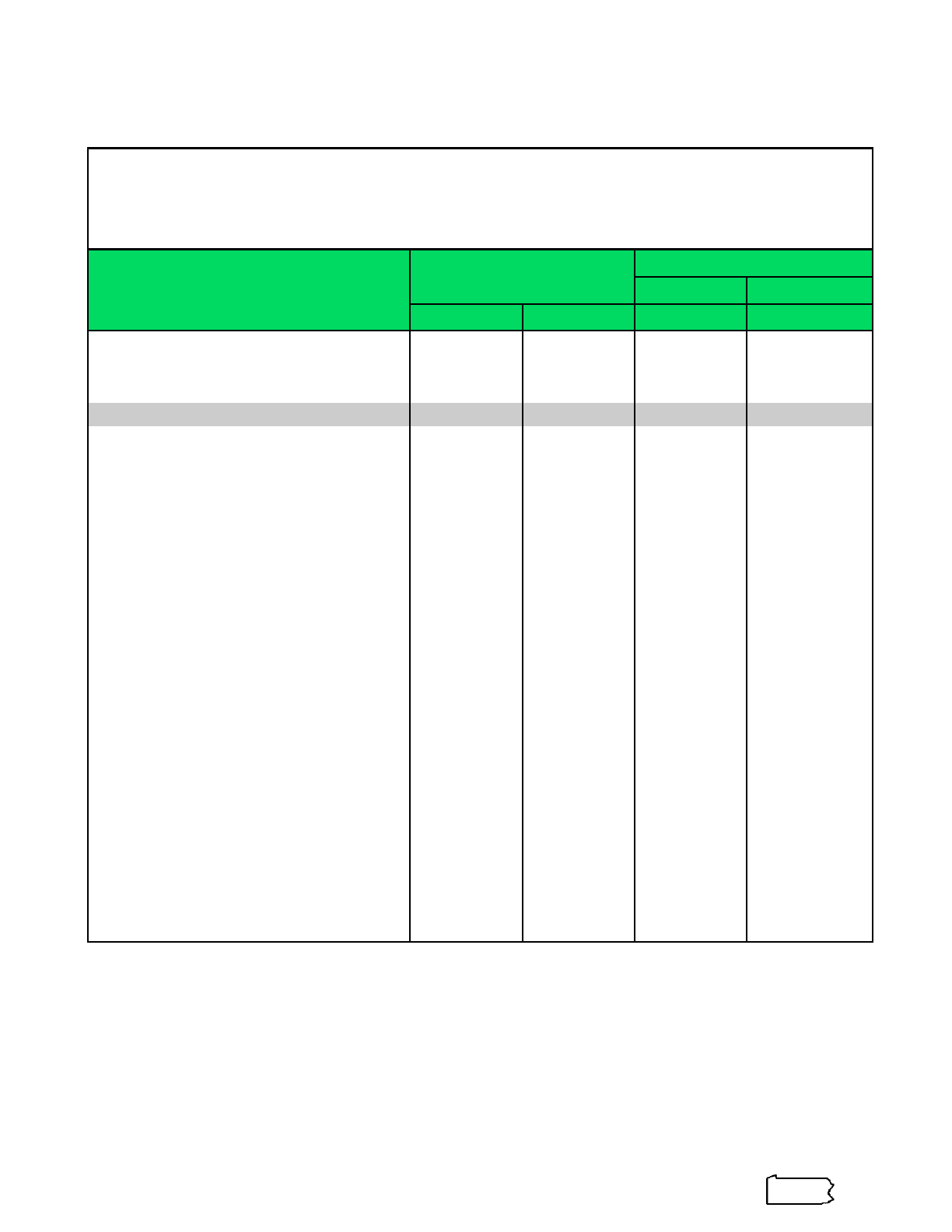
Minimum Wage Report 41
Table of Occupational Distributions
A Comparison of Occupational Distributions of Various Populations
Pennsylvania and U.S.: 2023 Averages
(total numbers of workers in thousands, breakdown by occupation in percent)
Occupation
Minimum Wage or Below
Above Minimum Wage
Near
Total
PA
1
U.S.
1
PA
PA
TOTAL
67.8
870
335.1
3,168.2
Occupation
Architecture & Engineering
0%
0%
0%
1%
Arts, Design, Entertainment, Sports & Media
0%
1%
1%
1%
Building, Grounds Cleaning & Maintenance
0%
2%
5%
3%
Business & Financial Operations
0%
1%
1%
3%
Community & Social Service
0%
0%
1%
2%
Computer & Mathematical Science
0%
1%
2%
2%
Construction & Extraction
6%
1%
0%
5%
Education, Training & Library
0%
1%
2%
3%
Farming, Fishing & Forestry
4%
0%
0%
1%
Food Preparation & Serving Related
69%
66%
22%
7%
Healthcare Practitioner & Technical
0%
1%
2%
8%
Healthcare Support
3%
4%
6%
7%
Installation, Maintenance & Repair
0%
0%
0%
4%
Legal
2%
0%
0%
1%
Life, Physical & Social Service
0%
0%
0%
1%
Management
0%
2%
2%
4%
Office & Administrative Support
2%
3%
13%
13%
Personal Care & Service
3%
4%
6%
2%
Production
0%
2%
5%
8%
Protective Service
0%
2%
2%
3%
Sales & Related
6%
4%
19%
9%
Transportation & Material Moving
5%
4%
11%
13%
1
Both the U.S. minimum wage and the PA minimum wage were $7.25 during 2023
Totals may not sum due to rounding
Source: U.S. Bureau of the Census, Current Population Survey

Minimum Wage Report
42
Programs that May Assist Low Income Workers
There are a multitude
6
of state and federal programs including cash aid, education, energy, food
aid, health care, etc., that provide assistance to low-income families. Below is a brief
description of some of the major programs for which some minimum wage or below workers
may be eligible. While the requirements of each program differ, they generally have a work
requirement and are based on family characteristics and income.
Earned income Tax Credit (EITC): is a refundable federal tax credit that offsets some payroll
and income taxes of low-income working families. To qualify, one needs to file a tax return
(cannot file married, filing separately), have earned income (i.e., work), have less than $53,505
of both earned and adjusted gross income (limits are lower for less than three qualifying children
and if not filing “married filing jointly”), and no more than $3,400 in investment income. The
maximum benefit ranges from $506 (no qualifying children) to $6,269 (three or more qualifying
children).
Child Tax Credit (CTC): helps working families offset the cost of raising children. Eligibility
requires one to file taxes, have at least one qualified child, and have earned income (work). The
maximum modified adjusted gross income is as high as $110,000, for married couples filing
jointly. The maximum tax credit is $1,000 for each qualified child and equals 15 percent of
earnings over $3,000. The Additional Child Tax Credit (ACTC) is a refundable component of the
CTC.
Pennsylvania - Temporary Assistance for Needy Families (TANF): is a federal program
administered through the state via a block grant and is designed to help needy families achieve
self-sufficiency. It is also referred to as Cash Assistance. There are both resource and income
constraints as well as a maximum time limit (60 months) that one can access these benefits.
Supplemental Nutrition Assistance Program (SNAP): was formerly known as the Food
Stamp program. These benefits are used to buy food and help eligible low-income households
in Pennsylvania obtain more nutritious diets by increasing their food purchasing power at
grocery stores and supermarkets. There are gross monthly income limits based on family size
and presence of disabled persons.
Medicaid / Medical Assistance (MA): pays for health care services for eligible individuals.
Income limits are based on a multiple of the Federal Poverty Guidelines, which depends on
family size and composition.
More detailed information on these programs can be found at:
https://www.irs.gov/credits-deductions/individuals/earned-income-tax-credit/do-i-qualify-for-
earned-income-tax-credit-eitc
https://www.irs.gov/pub/irs-pdf/p972.pdf
https://www.dhs.pa.gov/Services/Assistance/Pages/TANF.aspx
https://www.dhs.pa.gov/Services/Assistance/Pages/SNAP.aspx
https://www.dhs.pa.gov/Services/Assistance/Pages/Medical-Assistance.aspx
6
In FY 2012, there were at least 92 federal programs that were designed to help lower-income Americans,
according to, The War on Poverty: 50 Years Later, March 3, 2014, by the House Budget Committee Majority Staff.

Minimum Wage Report 43
Minimum Wage Changes: Pennsylvania
7
and the U.S.
8
Effective
Date of Rate
Change
Federal Minimum Wage
Rates Under FLSA of
1938 (as amended)
Pennsylvania Minimum Wage
Rates Under Minimum Wage
Act of 1968 (as amended)
Effective
Pennsylvania
Minimum Wage
Rate
Oct 24,1938
$0.25
$0.25
Oct 24,1939
$0.30
$0.30
Oct 24,1945
$0.40
$0.40
Jan 25,1950
$0.75
$0.75
Mar 1,1956
$1.00
$1.00
Sep 3,1961
$1.15
$1.15
Sep 3,1963
$1.25
$1.25
Feb 1,1967
$1.40
$1.40
Feb 1,1968
$1.60
$1.60
May 1,1974
$2.00
$2.00
Jan 1,1975
$2.10
$2.10
Jan 1,1976
$2.30
$2.30
Jan 1,1978
$2.65
$2.65
Jan 1,1979
$2.90
$2.90
$2.90
Jan 1,1980
$3.10
$3.10
$3.10
Jan 1,1981
$3.35
$3.35
$3.35
Feb 1,1989
$3.70
$3.70
Apr 1,1990
$3.80
$3.80
Apr 1,1991
$4.25
$4.25
Oct 1,1996
$4.75
$4.75
Sep 1,1997
$5.15
$5.15
$5.15
Jan 1,2007
$6.25
$6.25
Jul 1,2007
$7.15
$7.15
Jul 24,2007
$5.85
$7.15
Jul 24,2008
$6.55
$7.15
Jul 24,2009
$7.25
$7.25
7
Source: Minimum Wage Act of 1968 (as amended, see Section 4a),
(https://www.legis.state.pa.us/CFDOCS/LEGIS/LI/uconsCheck.cfm?txtType=HTM&yr=1968&sessInd=0&smthLwIn
d=0&act=0005.&CFID=341787833&CFTOKEN=29282704).
8
Sources: DOL Wage and Hour Division, “FEDERAL MINIMUM WAGE RATES UNDER THE FAIR LABOR
STANDARDS ACT” (https://www.dol.gov/sites/dolgov/files/WHD/legacy/files/chart.pdf) in tabular form and a more
verbal exposition in “History of Changes to the Minimum Wage Law”
(https://www.dol.gov/whd/minwage/coverage.htm).

Minimum Wage Report
44
Both the Fair Labor Standards Act (henceforth FLSA, which governs the federal minimum wage)
and Pennsylvania’s Minimum Wage Act of 1968 (henceforth MWA) have been amended
multiple times since their initial enactments. The thrust of these amendments has not only been
to increase the minimum wage, but also to expand the coverage of workers governed by the
minimum wage. Some workers may have been exempted from these laws, while others may
have been allowed by these amendments to be paid less the “standard” minimum wage (which
is the rate listed on the previous table). Section 4 (a.1) of the MWA mandates that if the
minimum wage set by the FLSA is increased above the rate required in Section 4 of the MWA,
then the minimum wage required under Section 4 would be increased by the same amount and
with the same effective date mandated by the FLSA. Consequently, some of the rates listed as
changes in the MWA are reflecting changes mandated by the FLSA. However, since they were
listed in the current version of the statute (last amended on July 5, 2012), they are listed in the
table on page 43. For workers covered by the FLSA, whenever the FLSA mandates a higher
minimum wage than state law, federal law (e.g., FLSA) supersedes state law. Consequently, the
effective minimum wage rate in the accompanying table is the higher of the rate mandated by
the FLSA or the MWA.

CENTER FOR WORKFORCE INFORMATION & ANALYSIS
DEPARTMENT OF LABOR & INDUSTRY
651 BOAS STREET, ROOM 220
HARRISBURG, PA 17121
WWW.WORKSTATS.DLI.PA.GOV
(877) 493-3282

